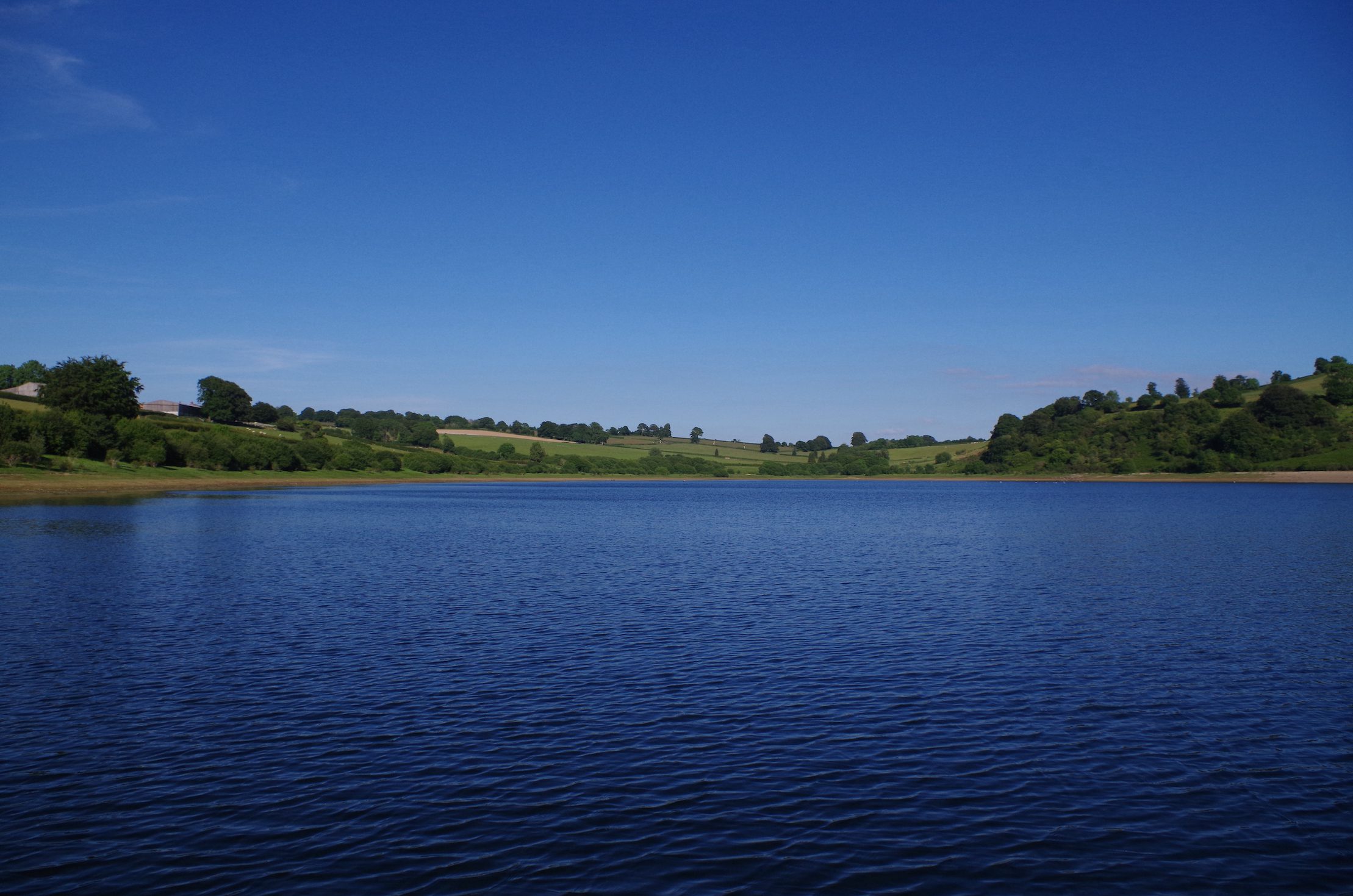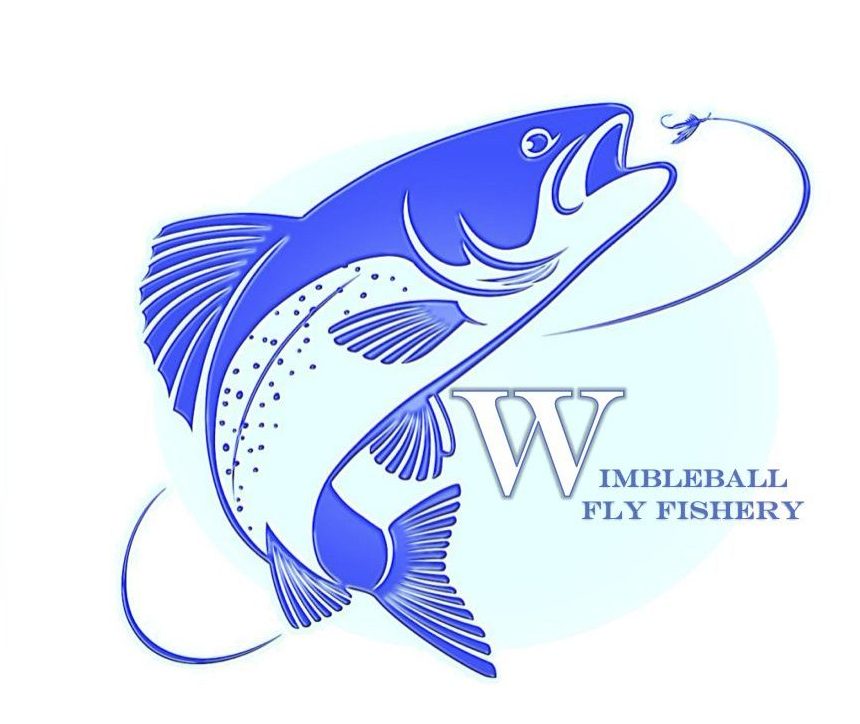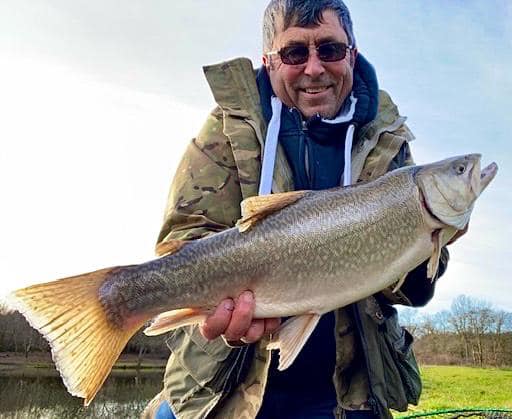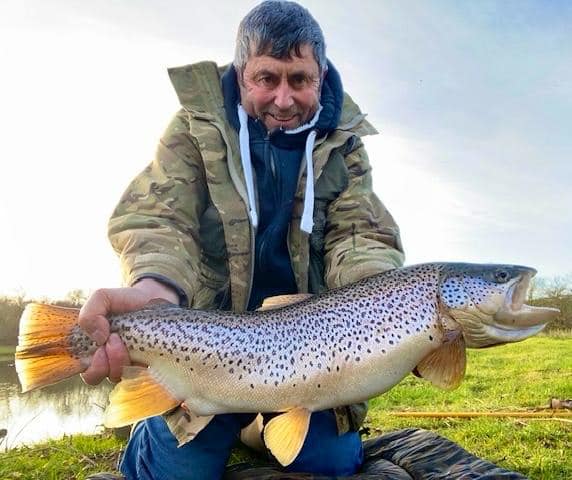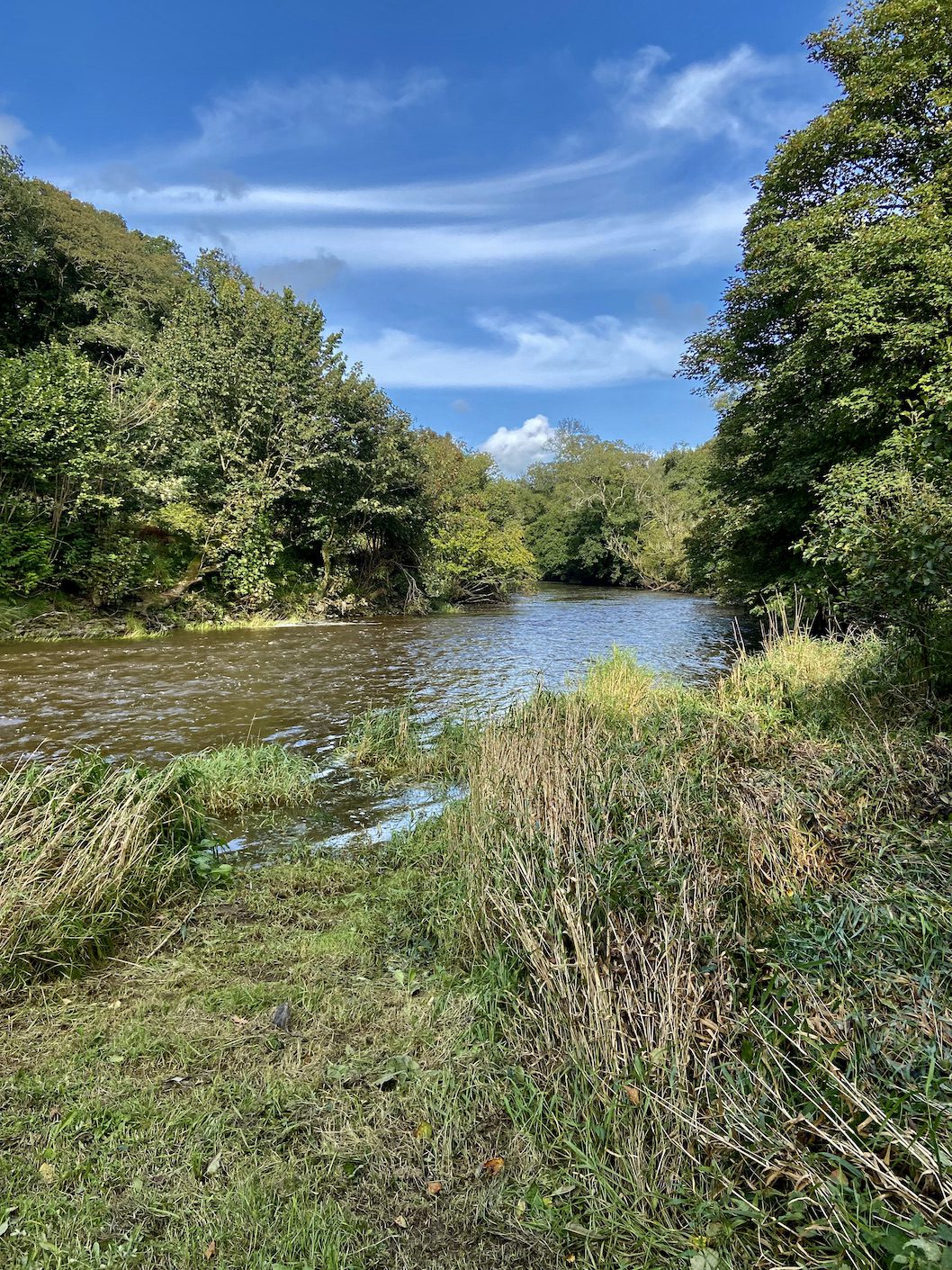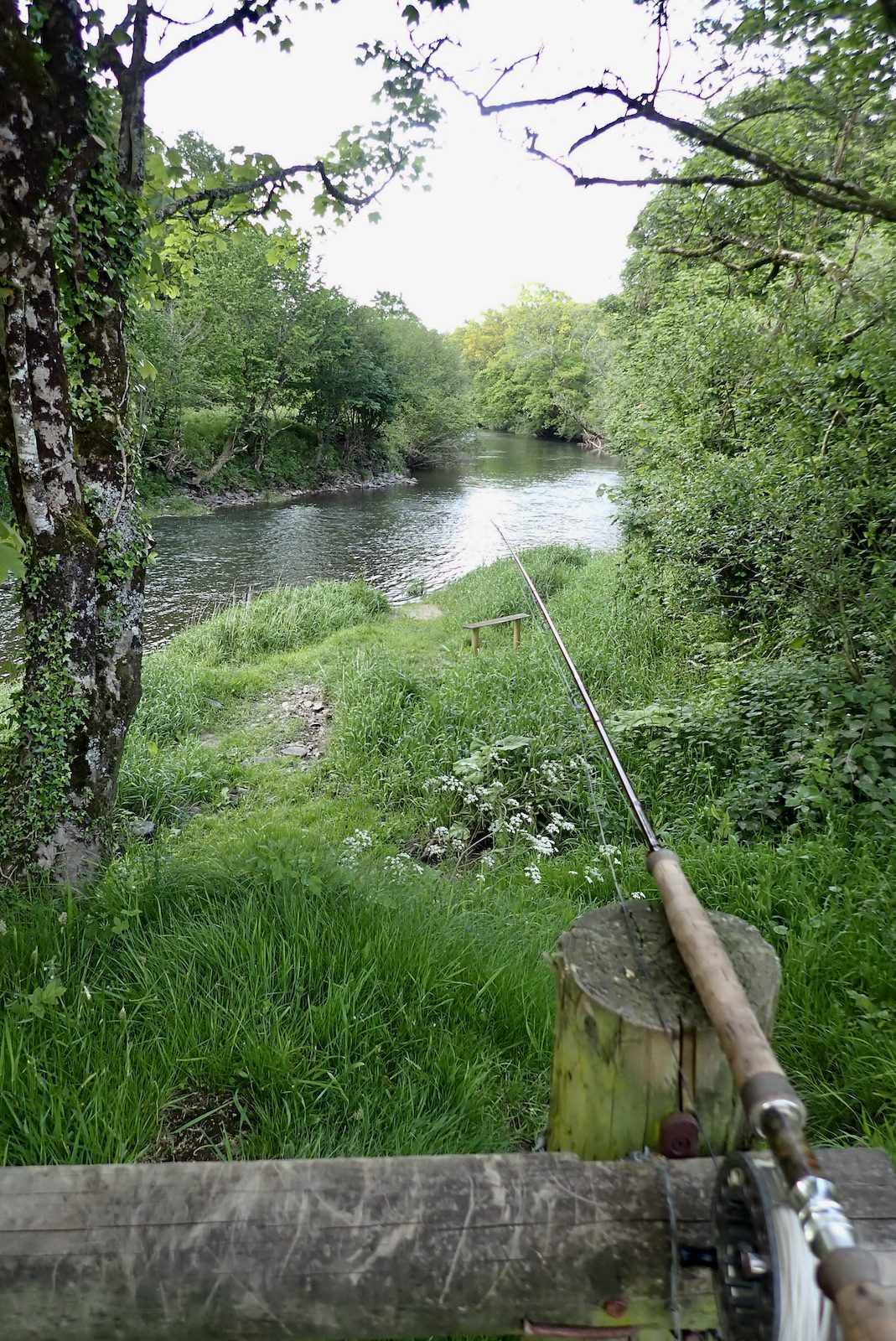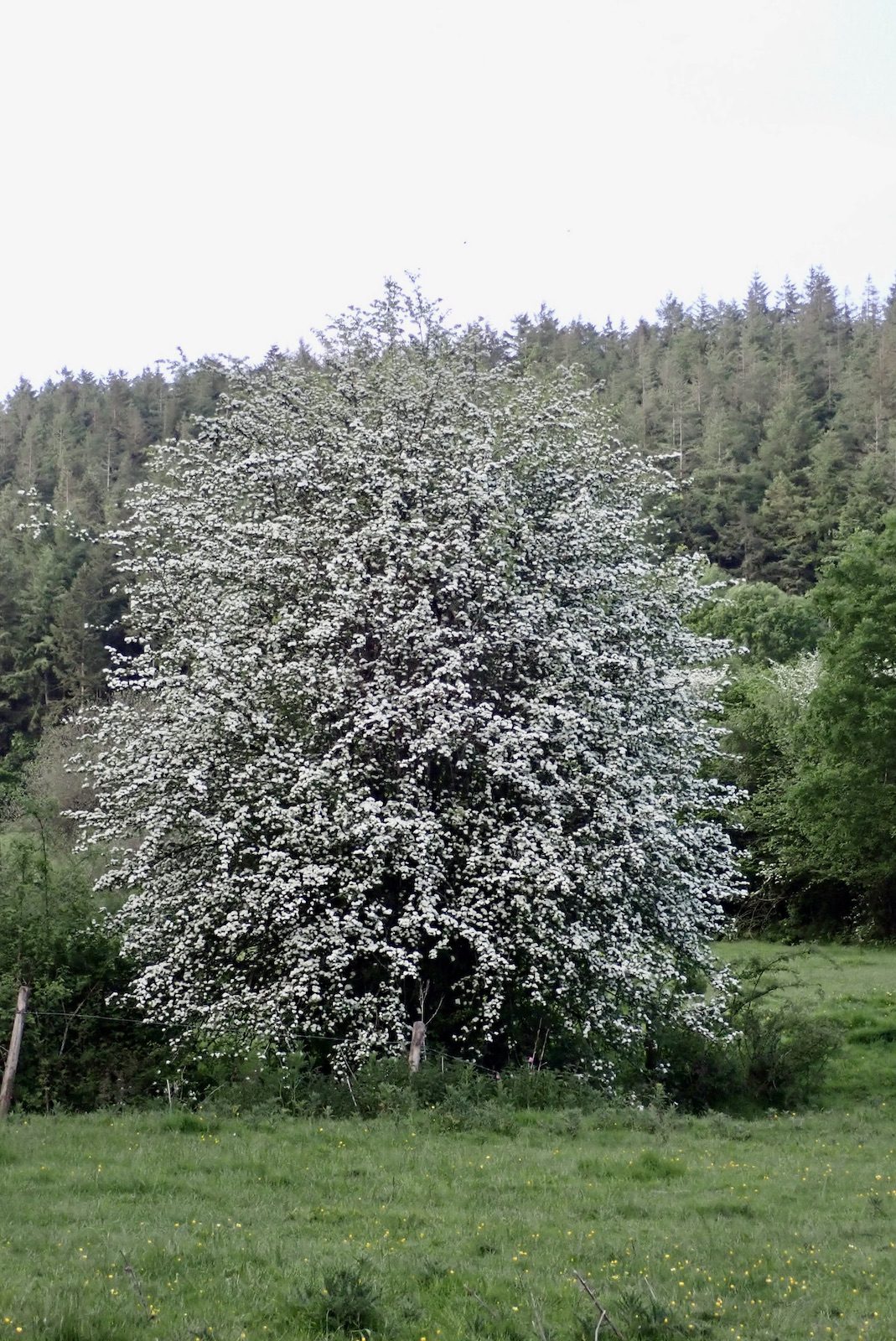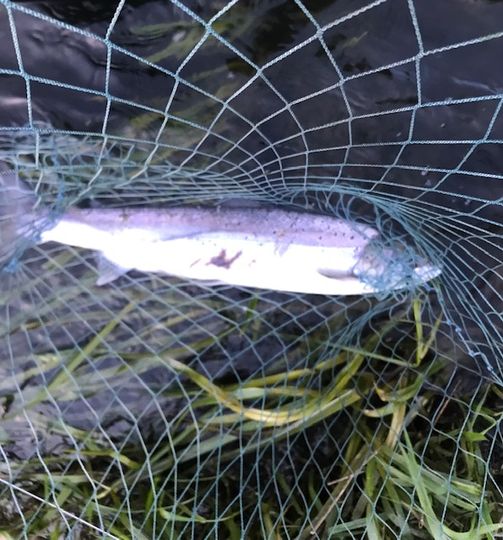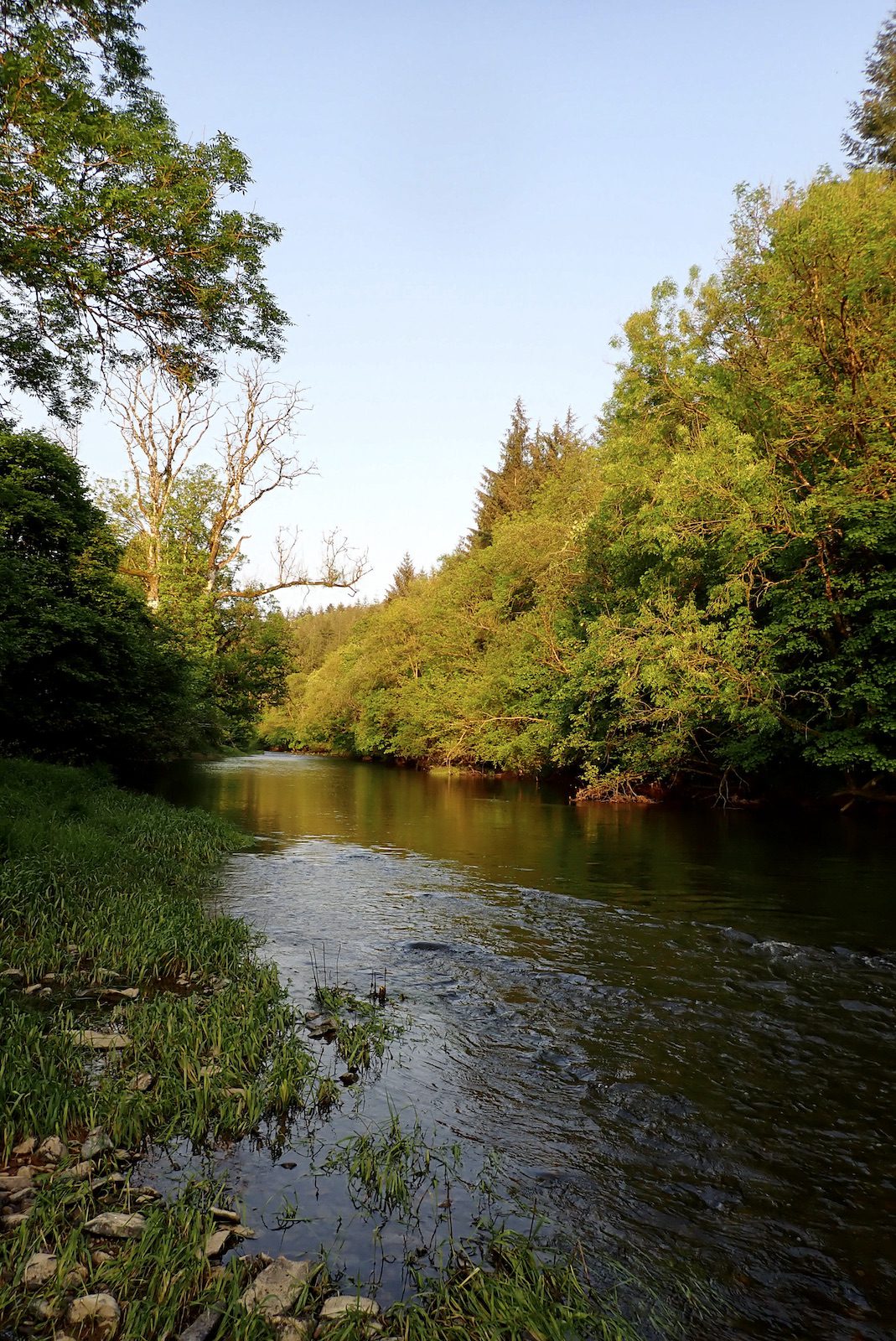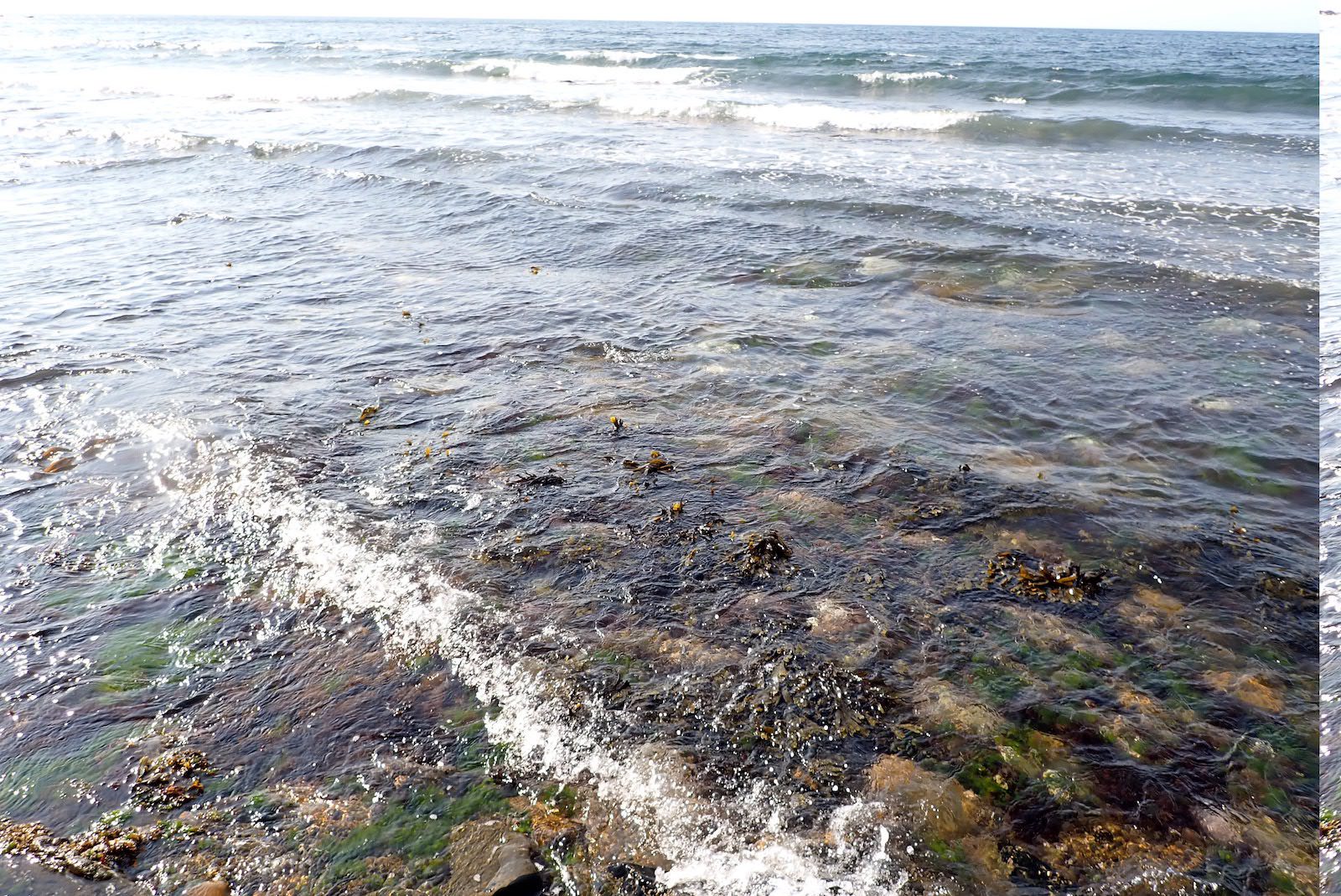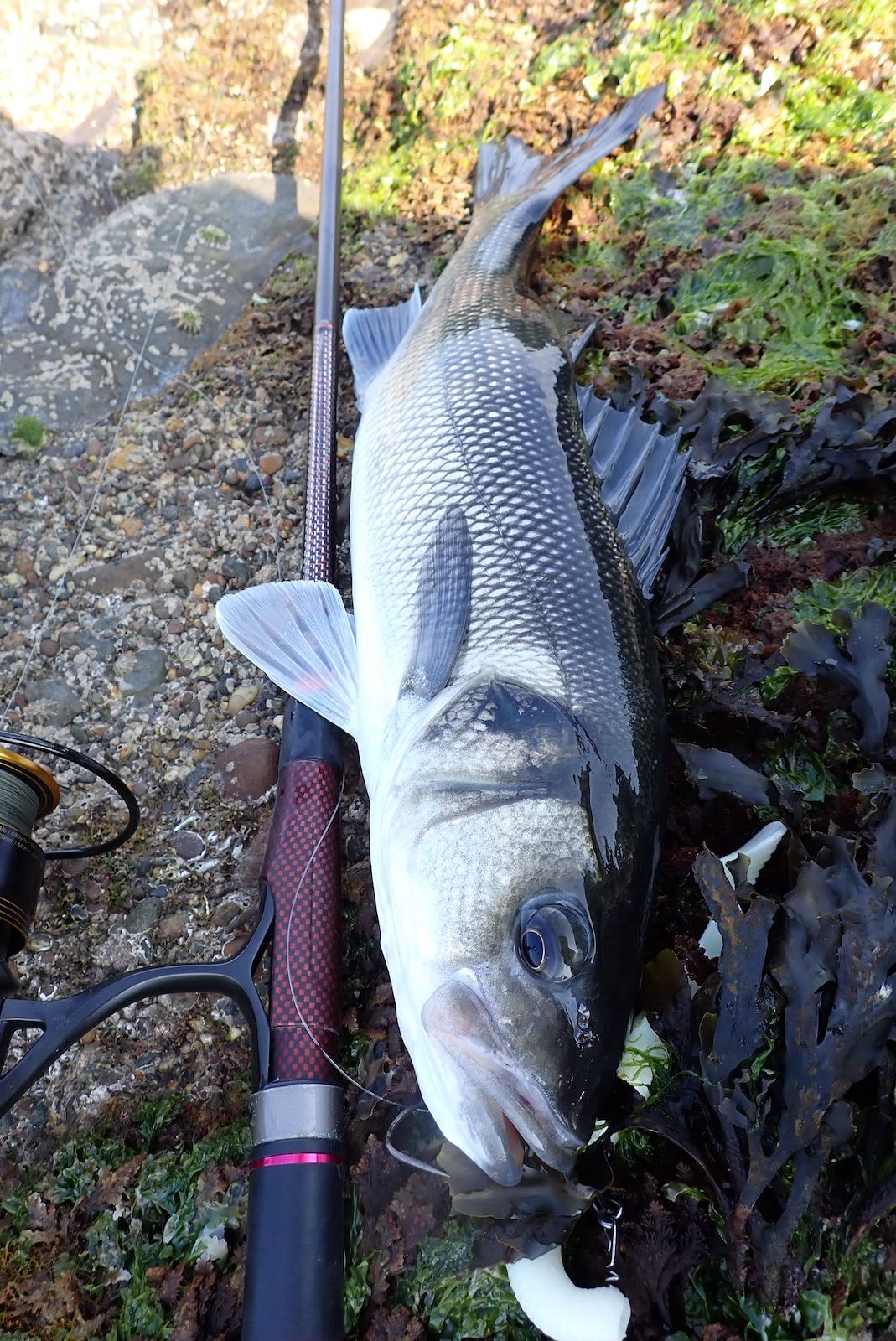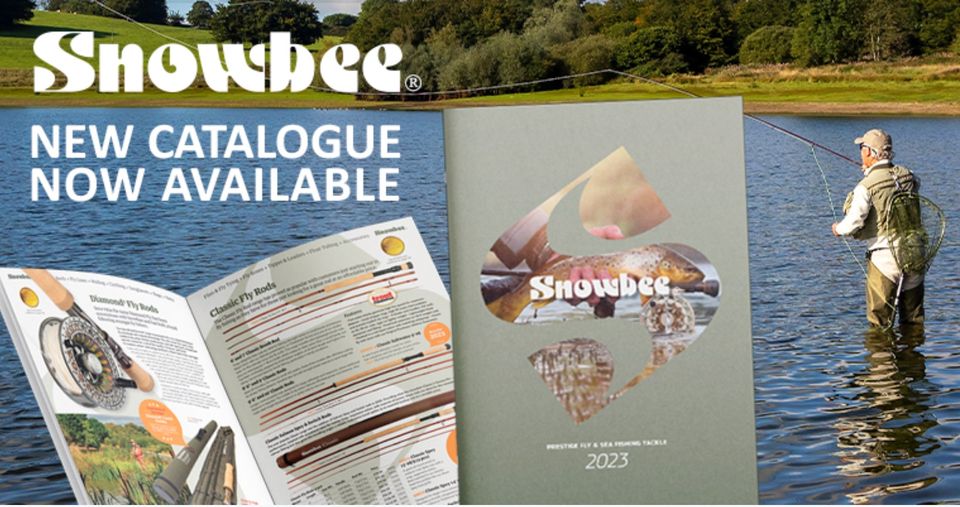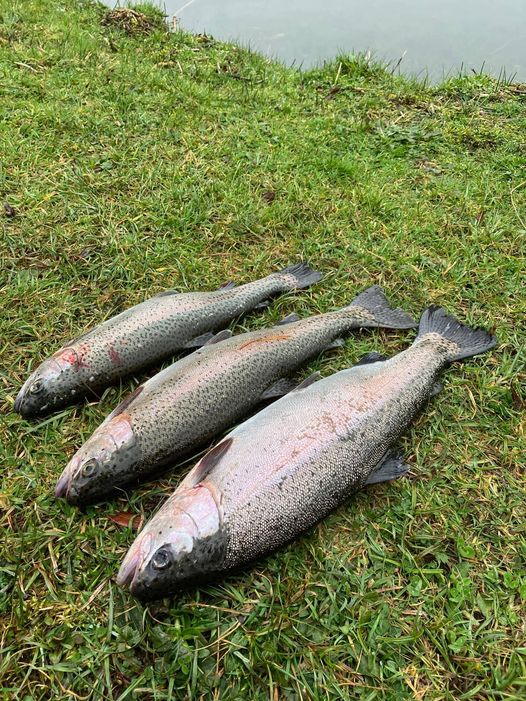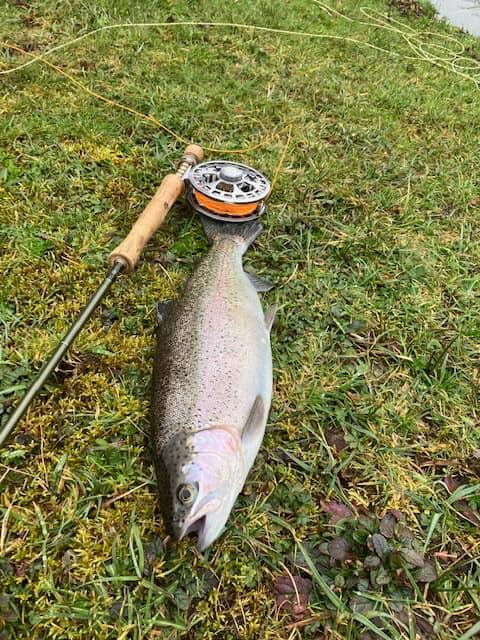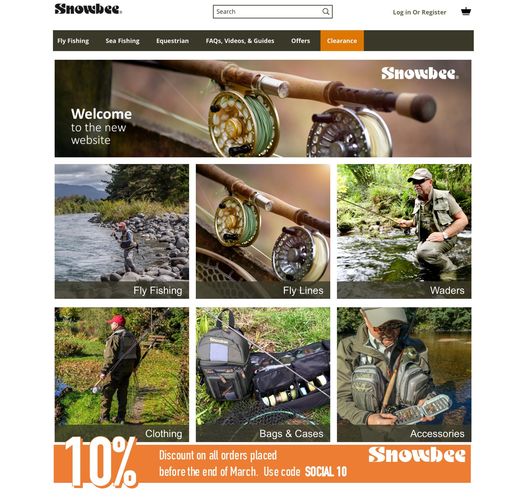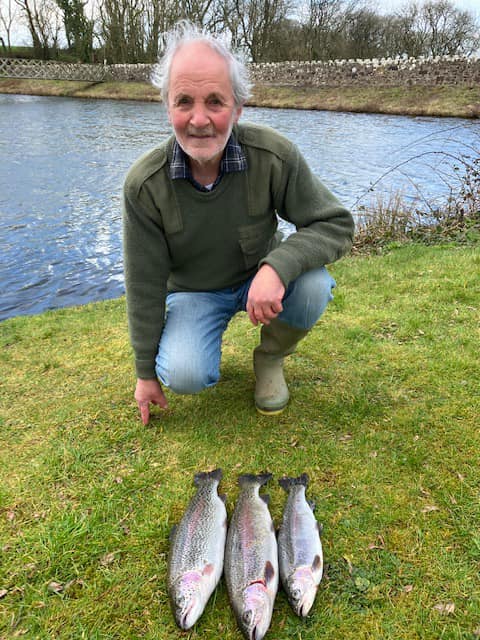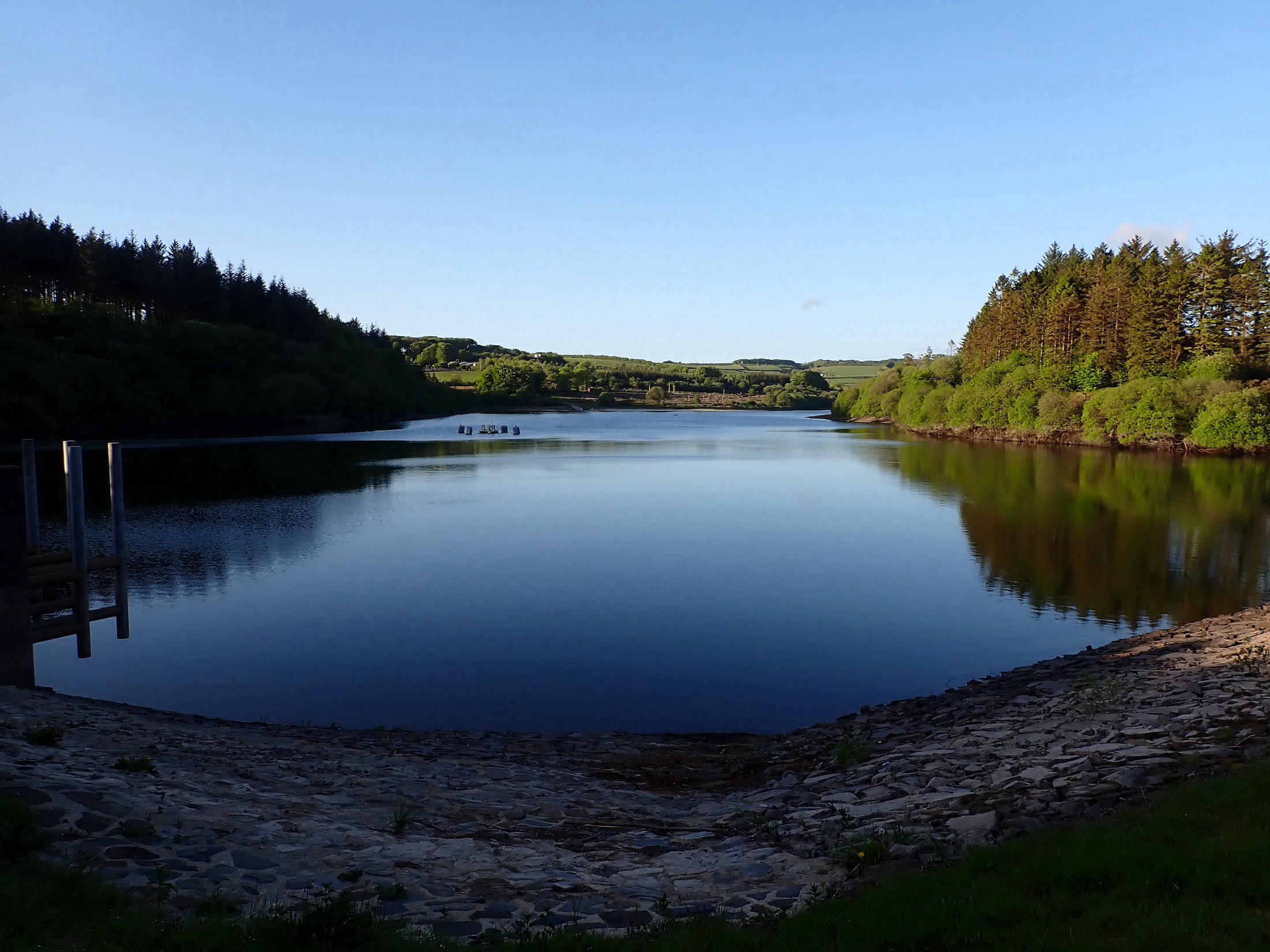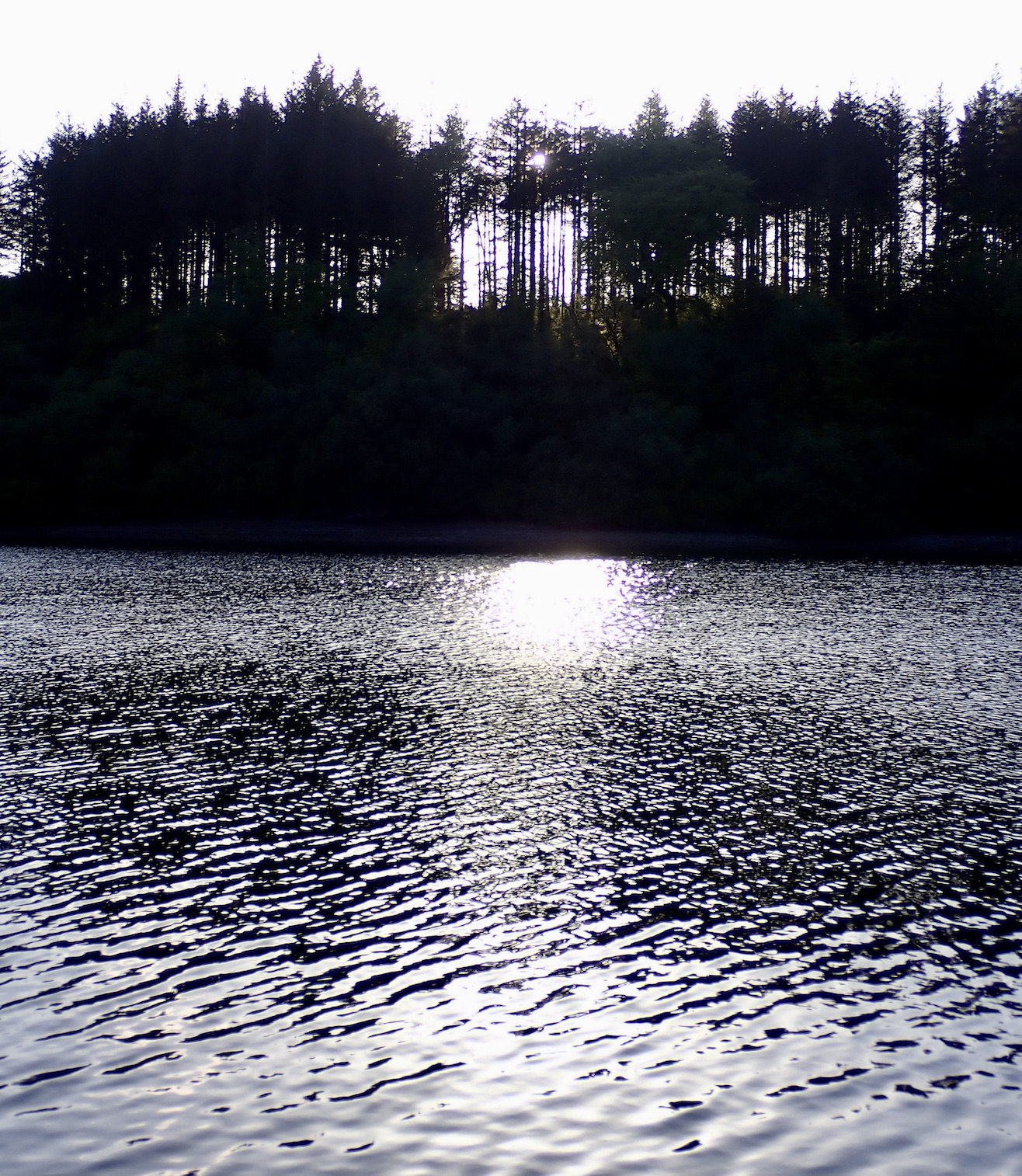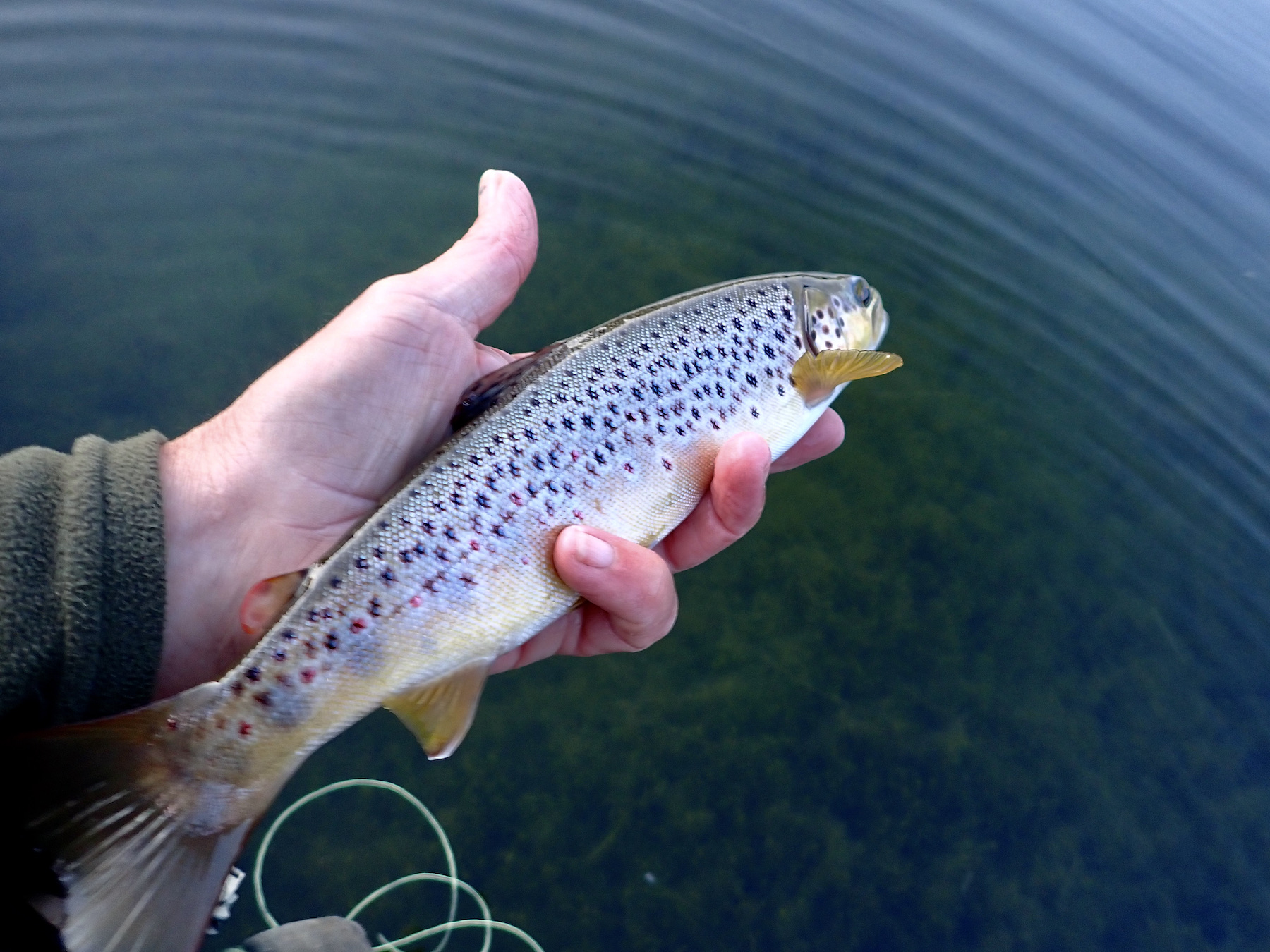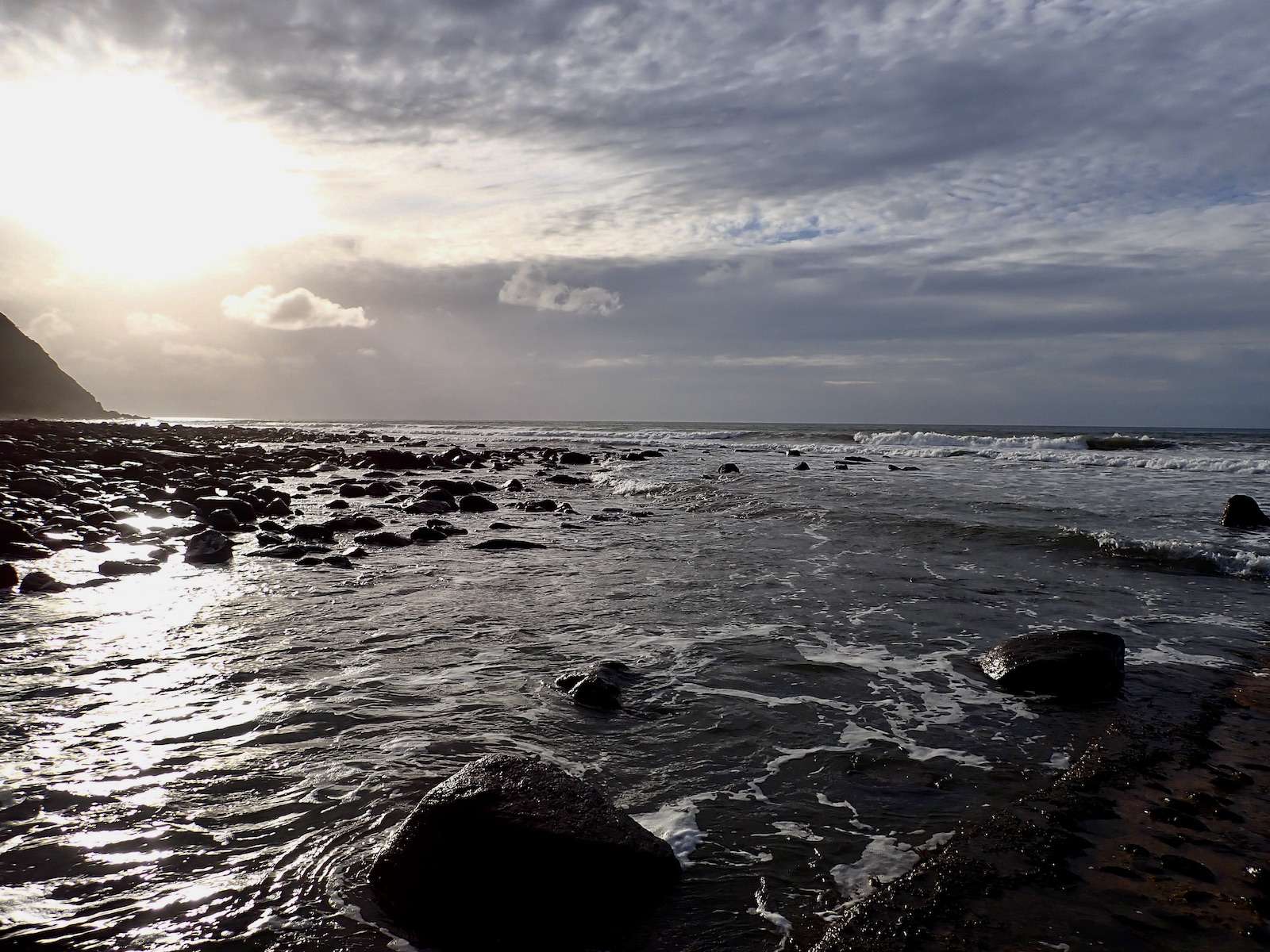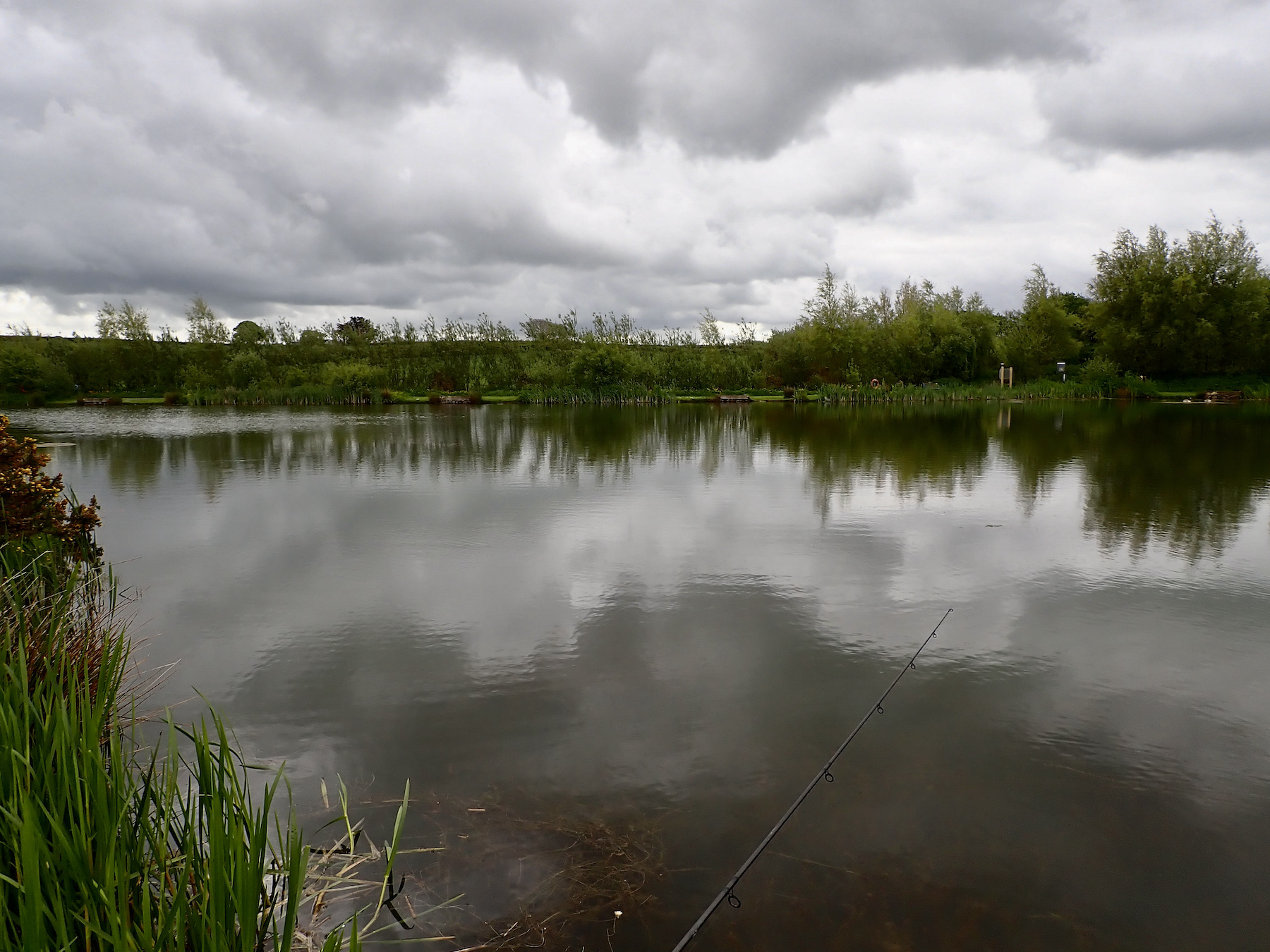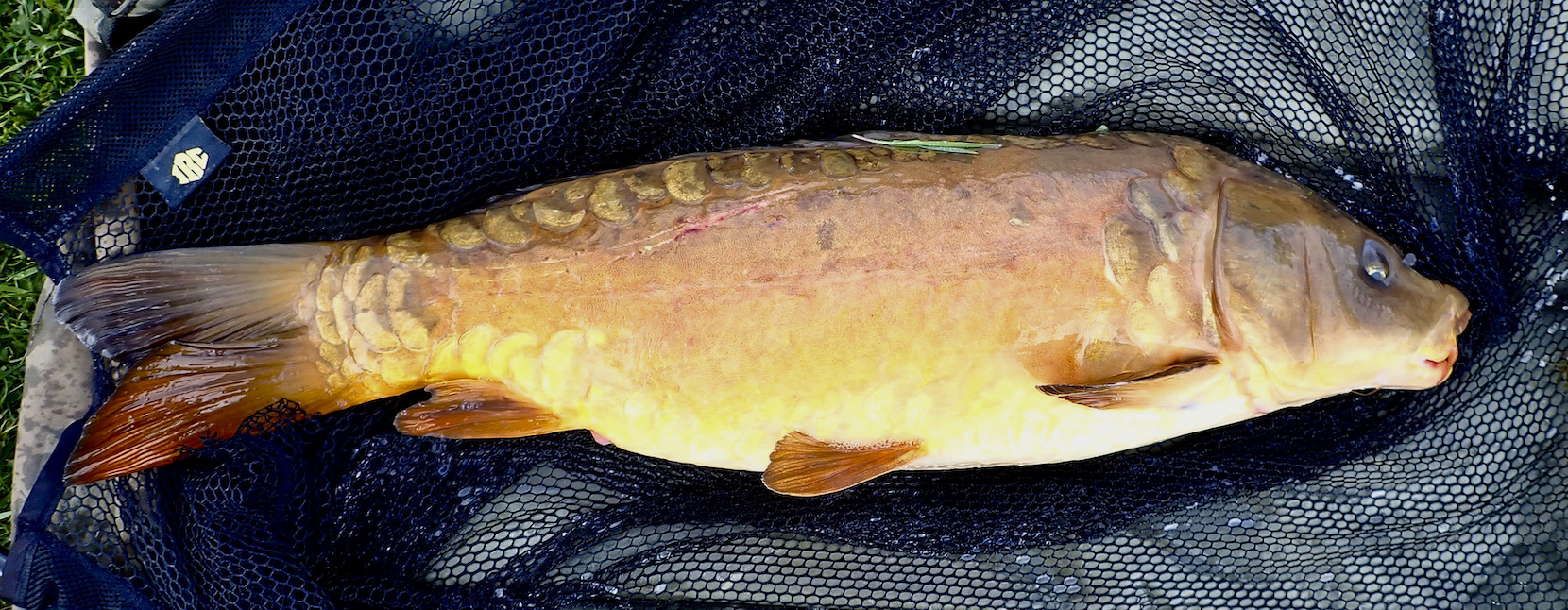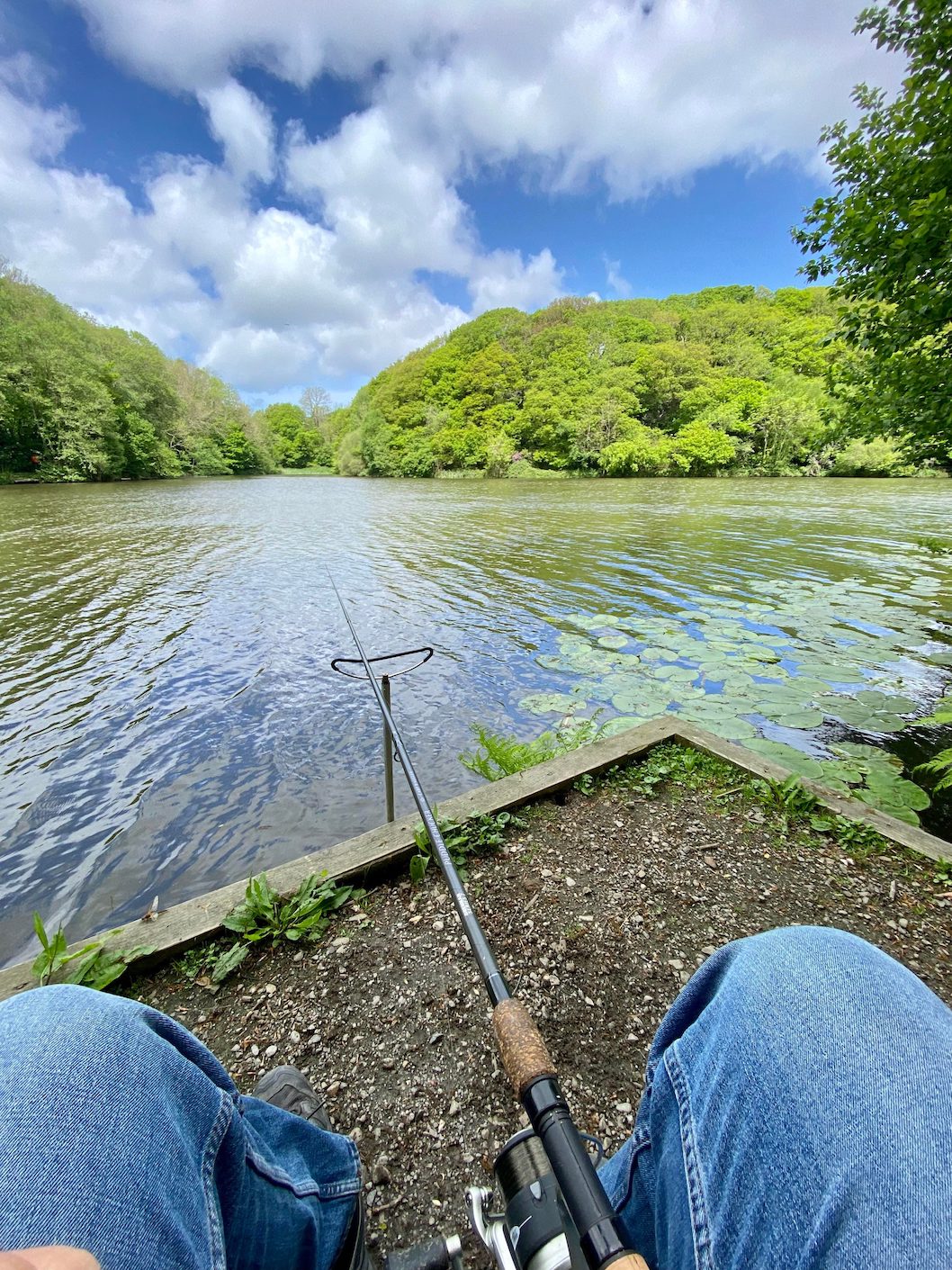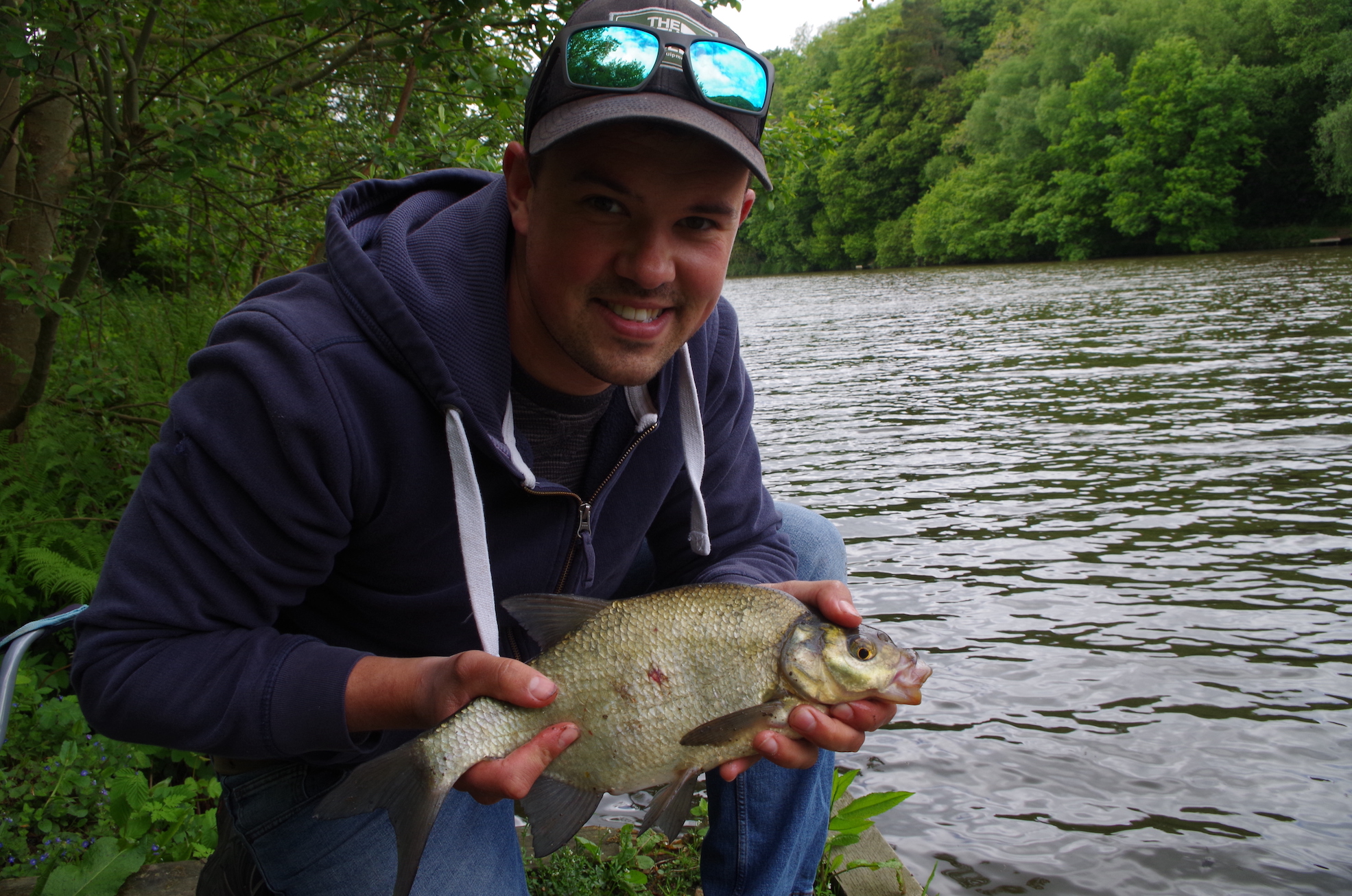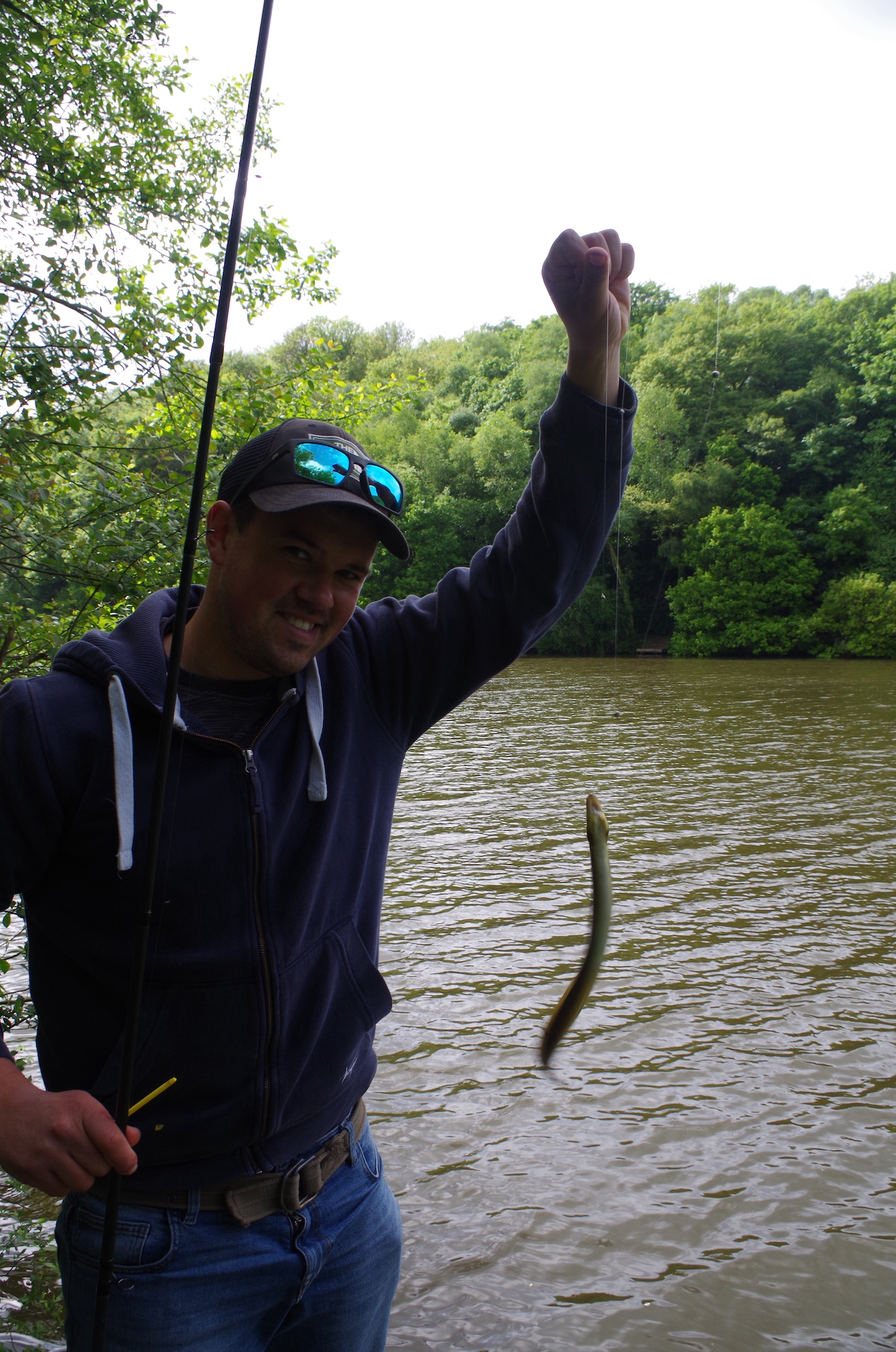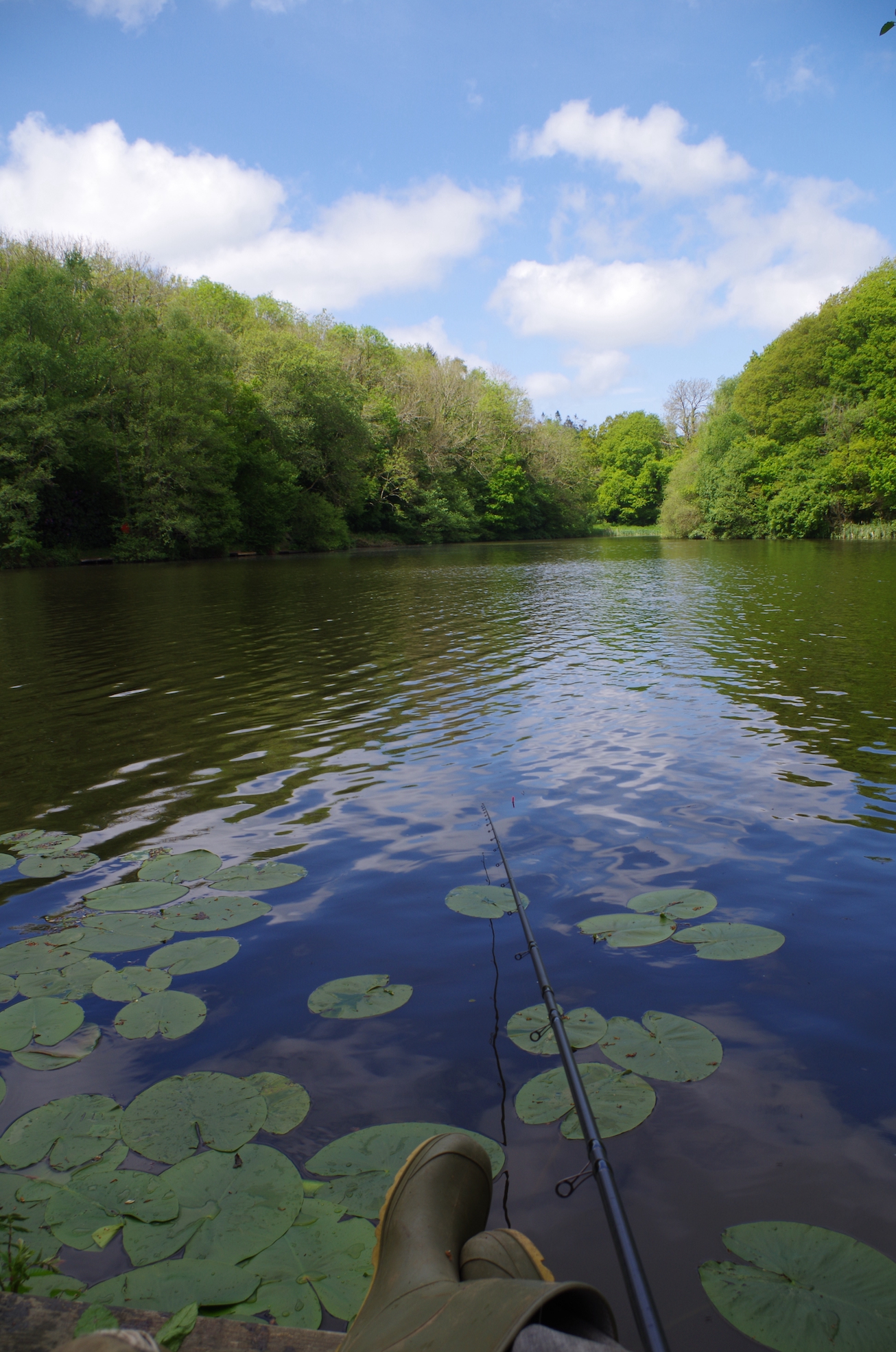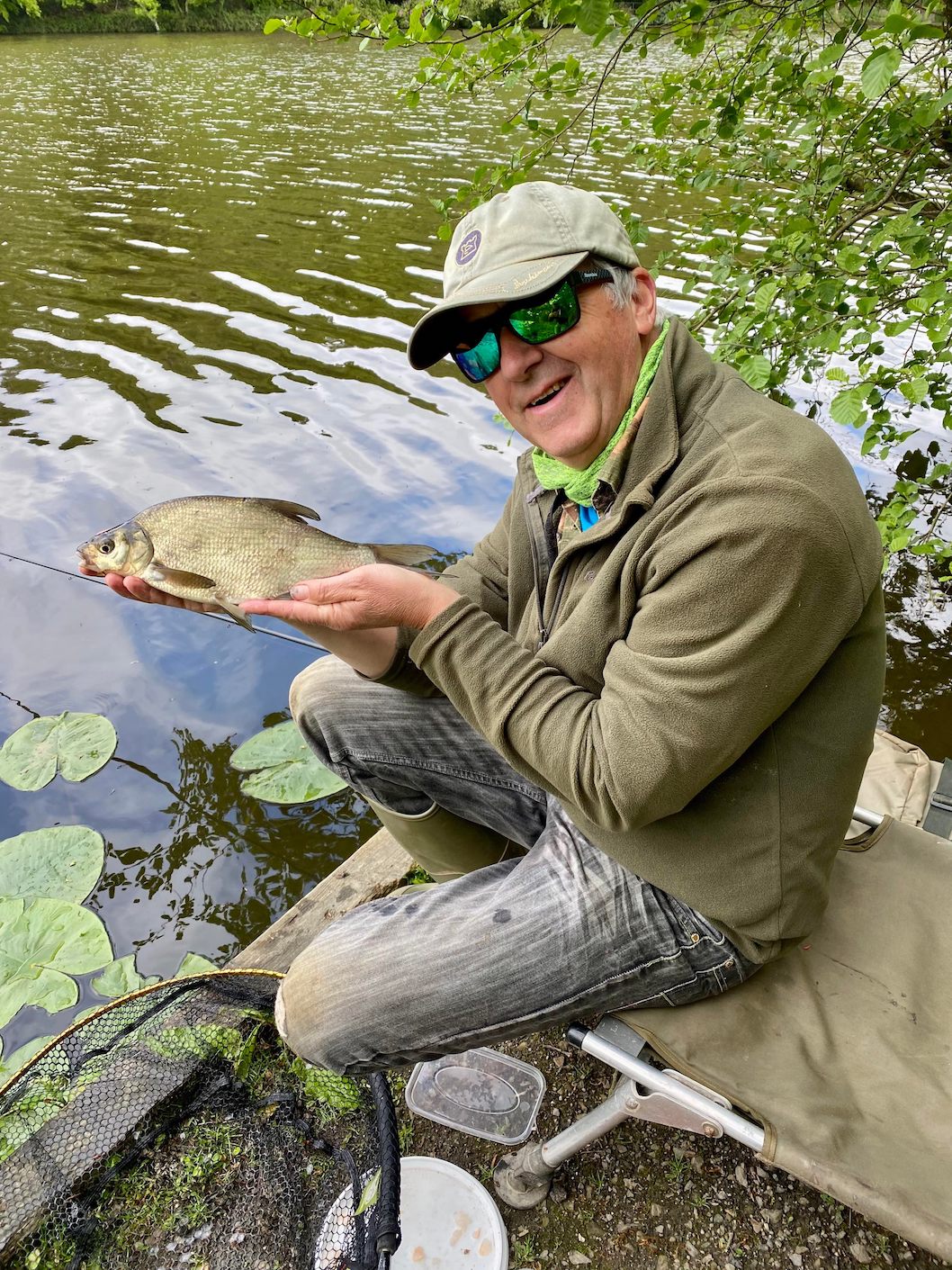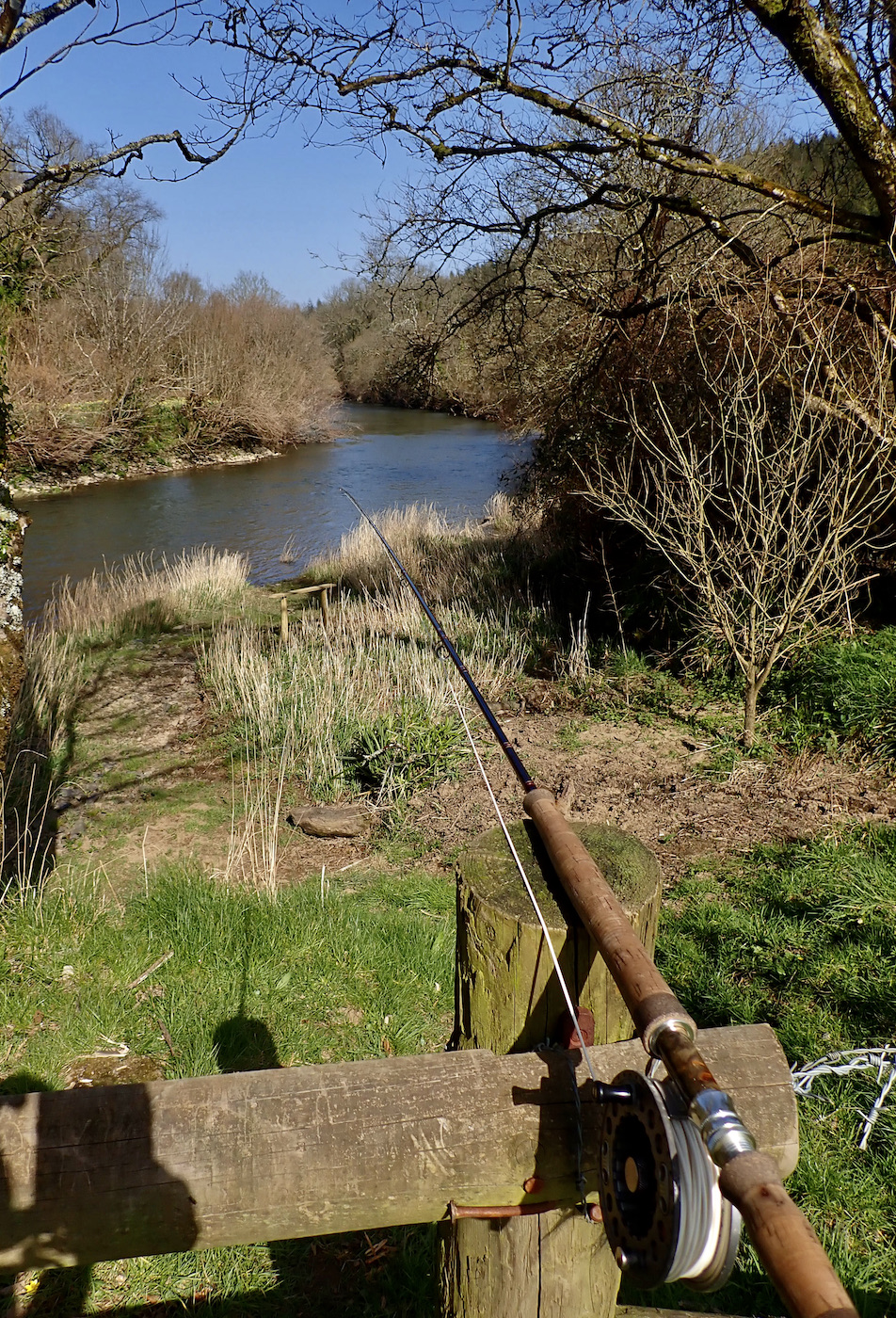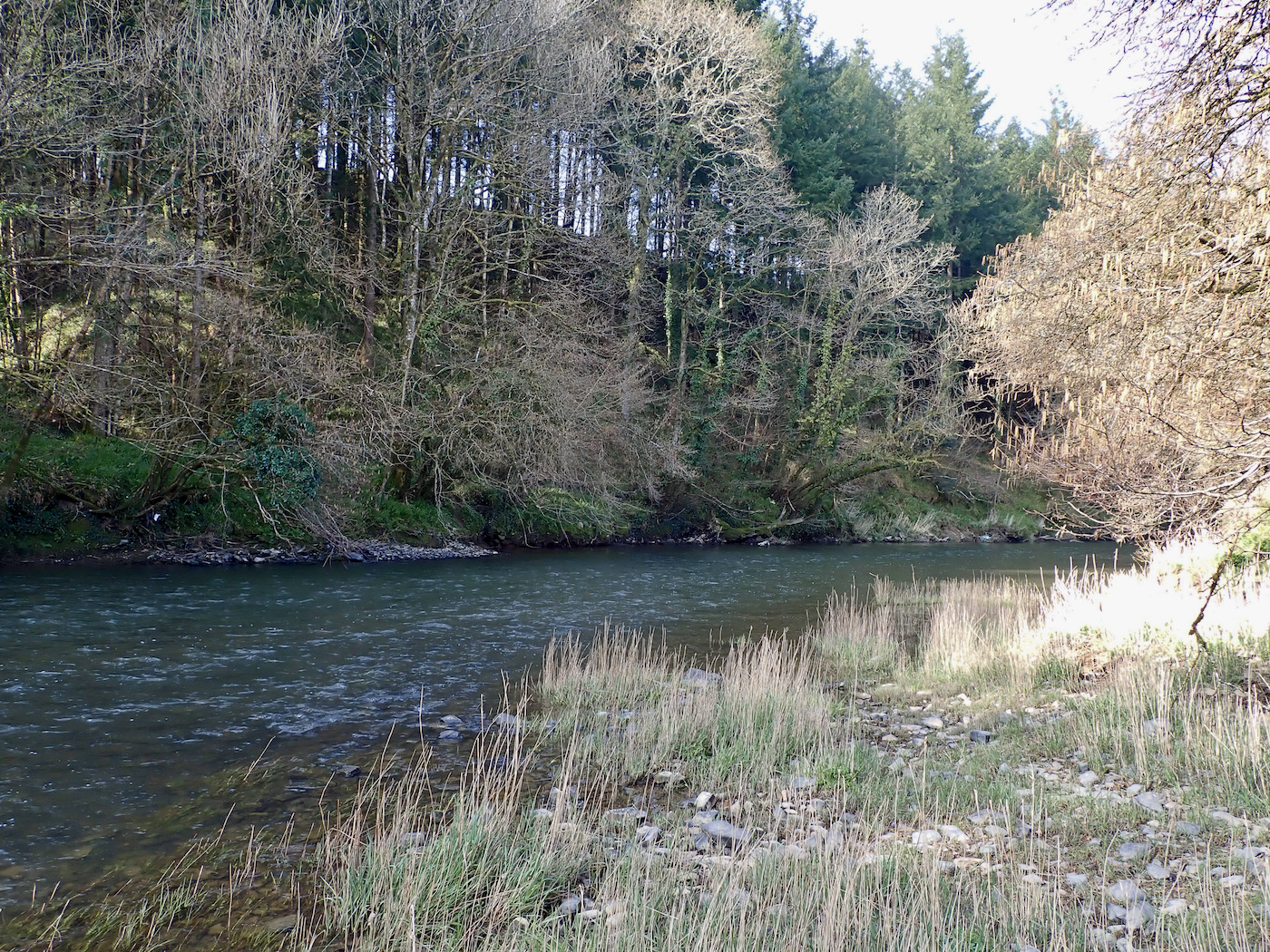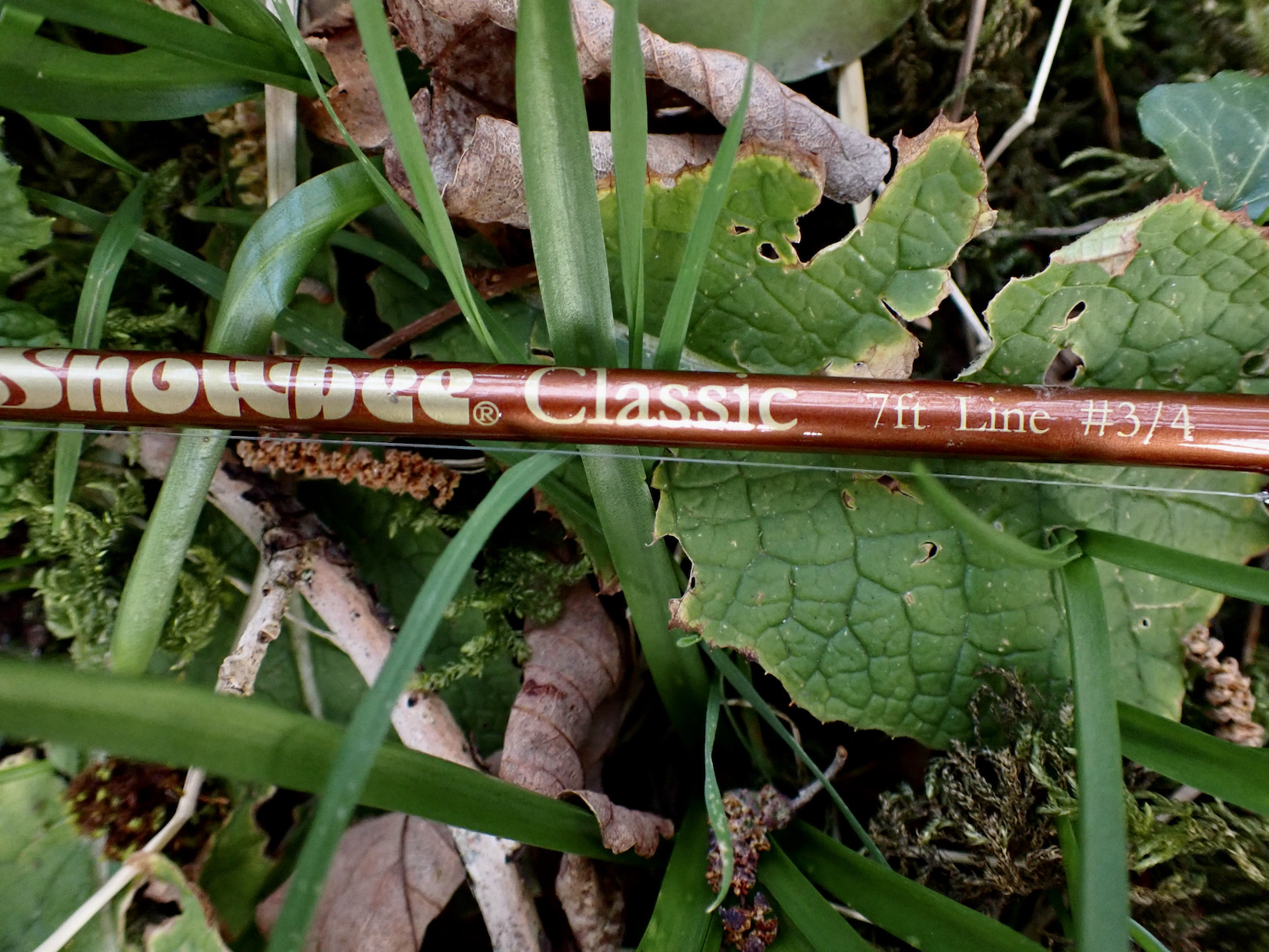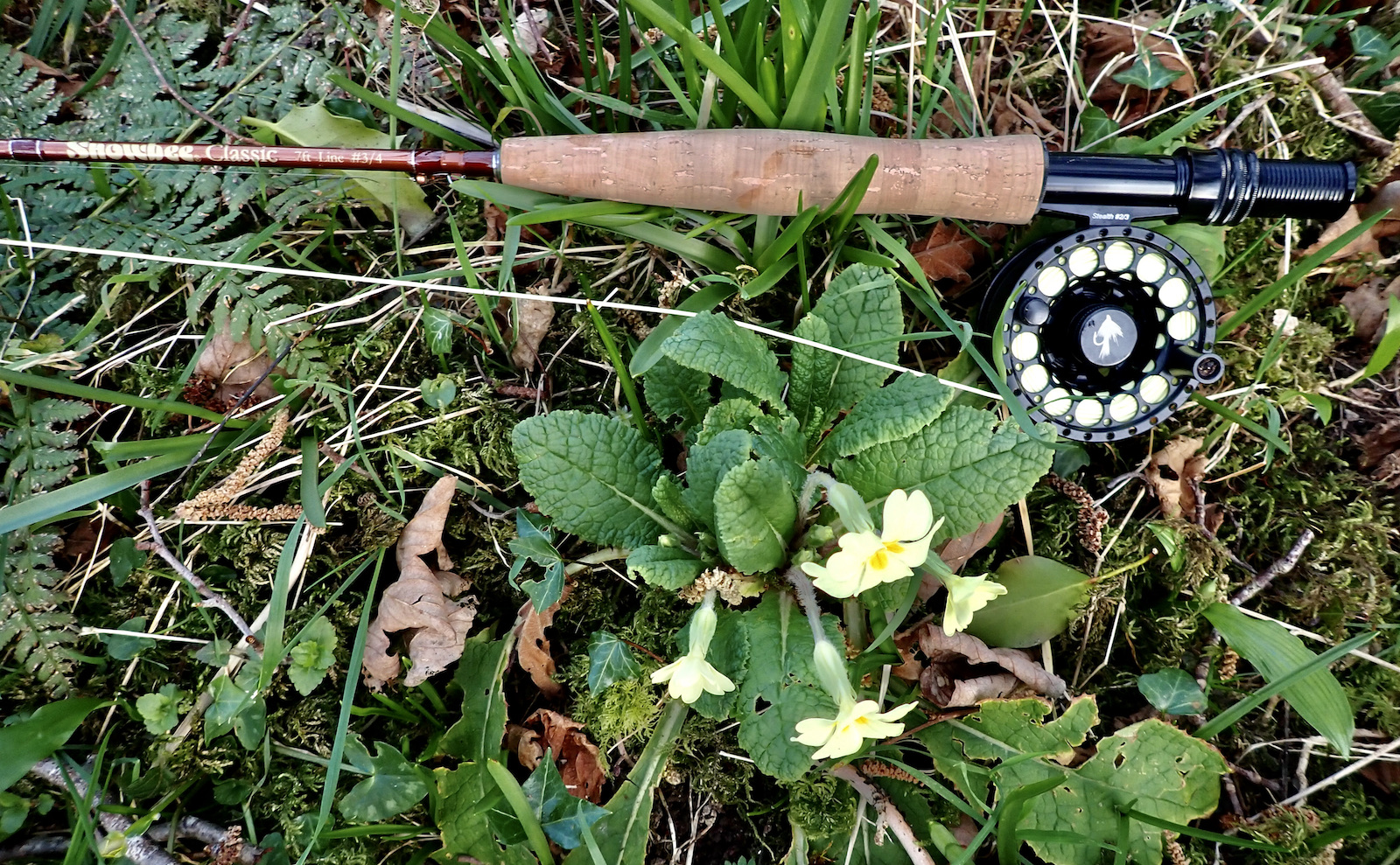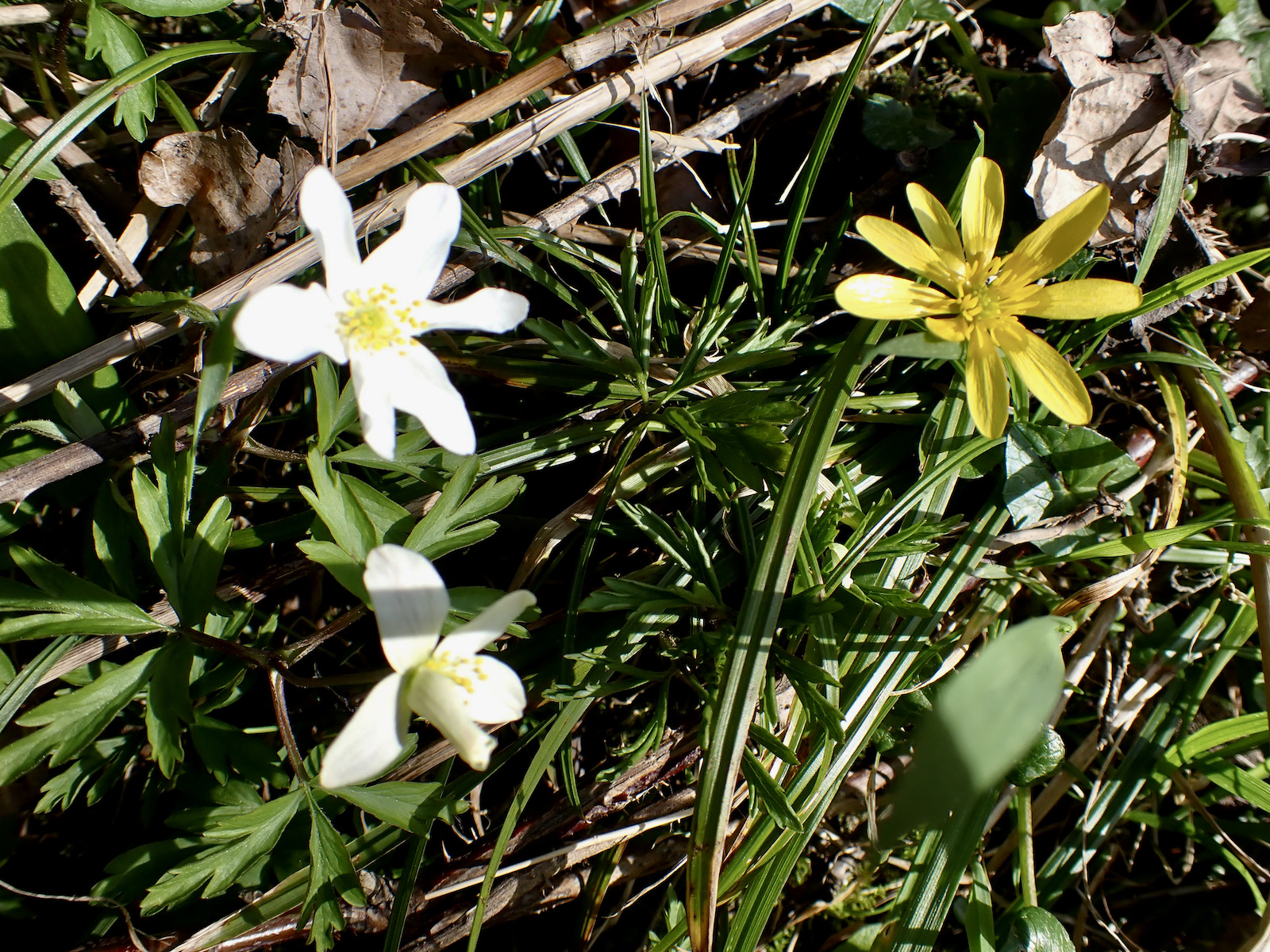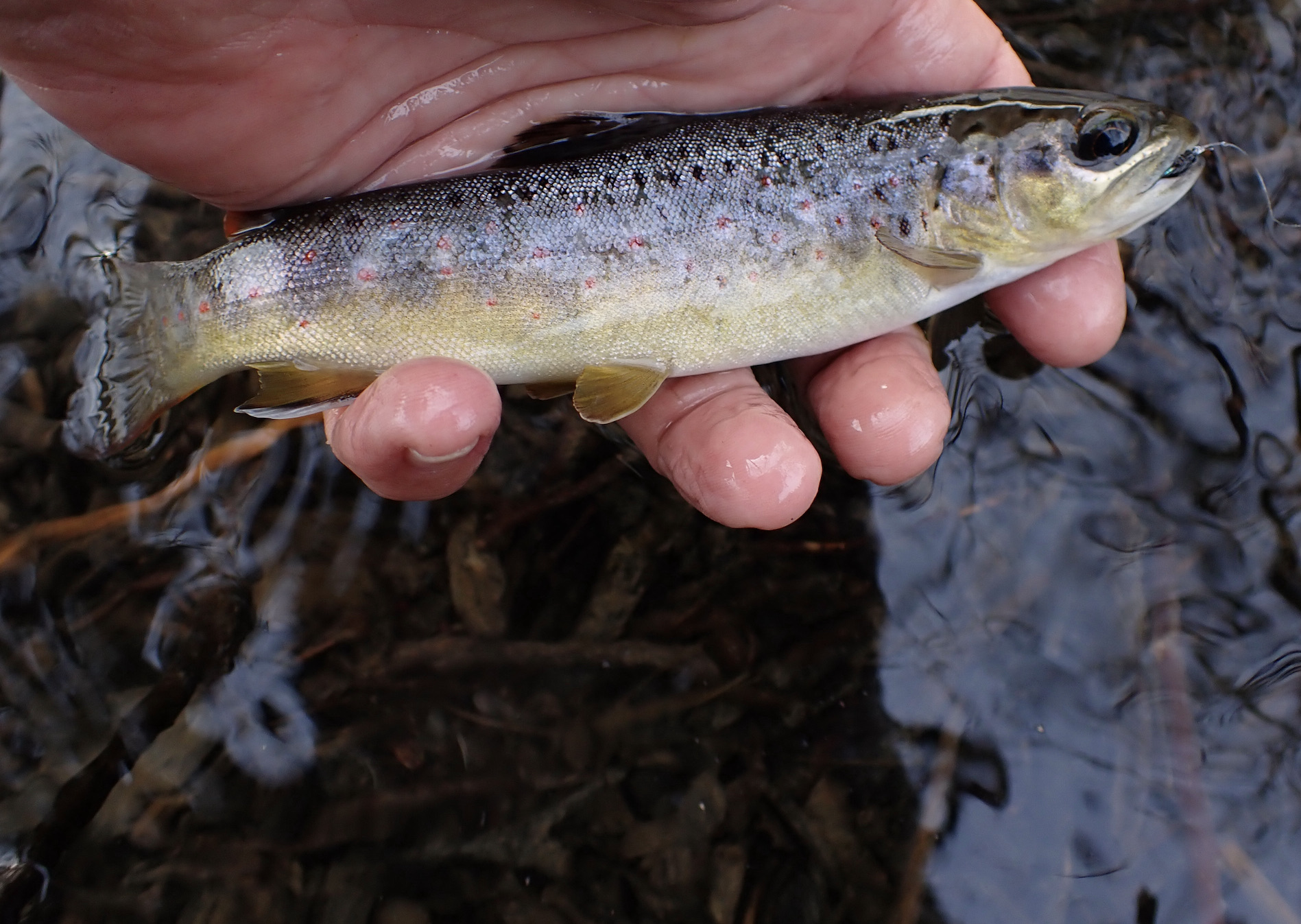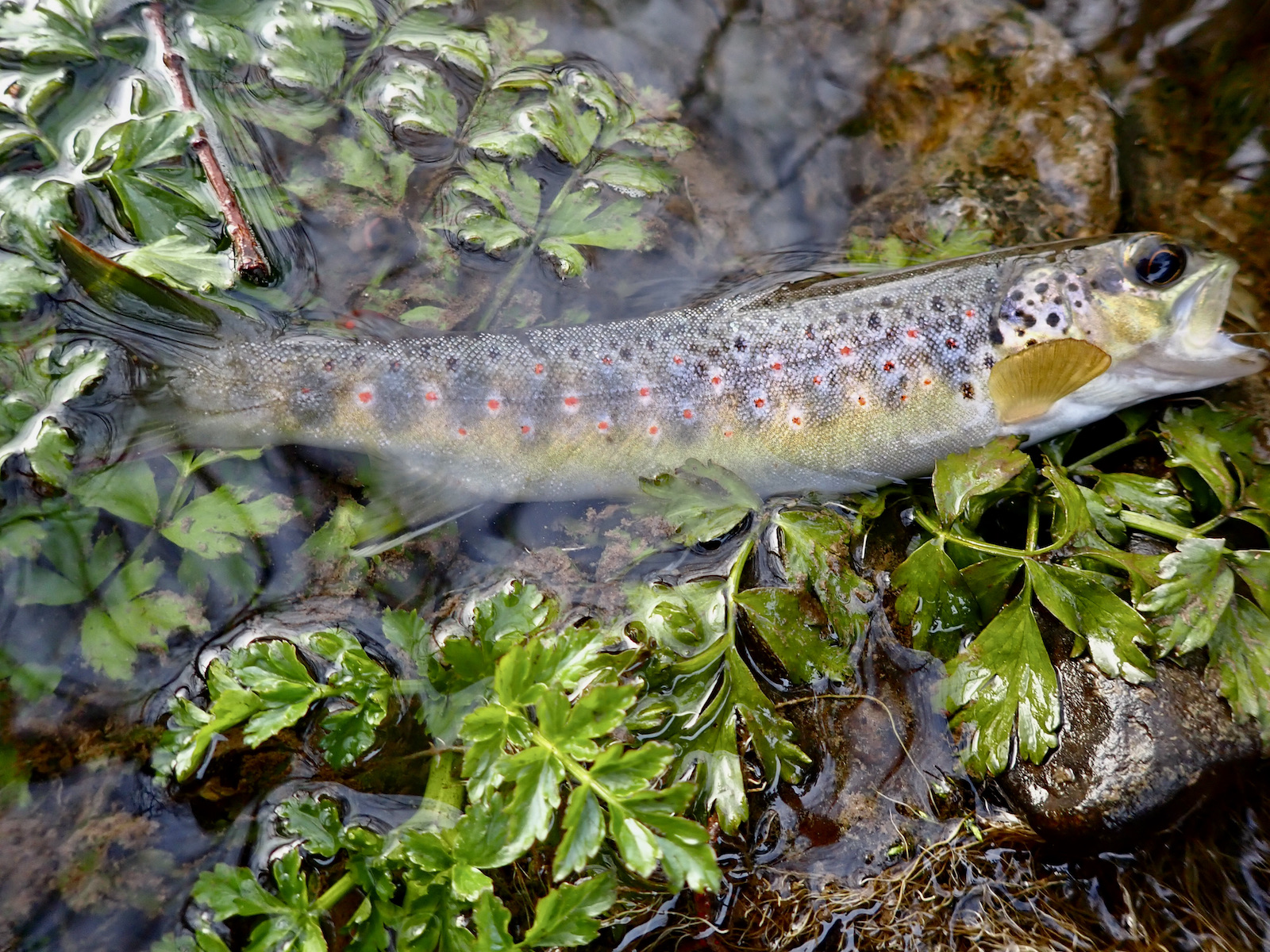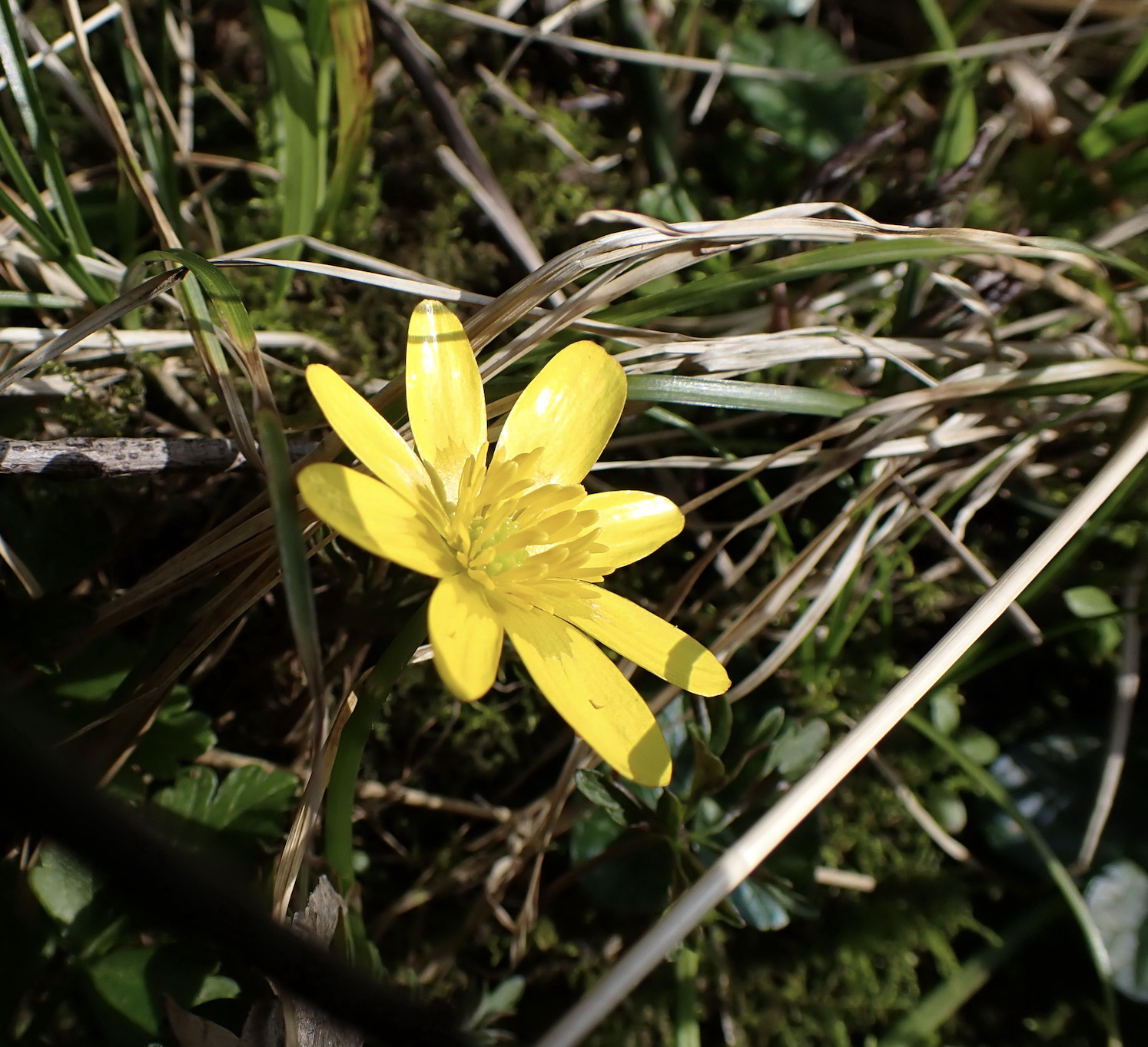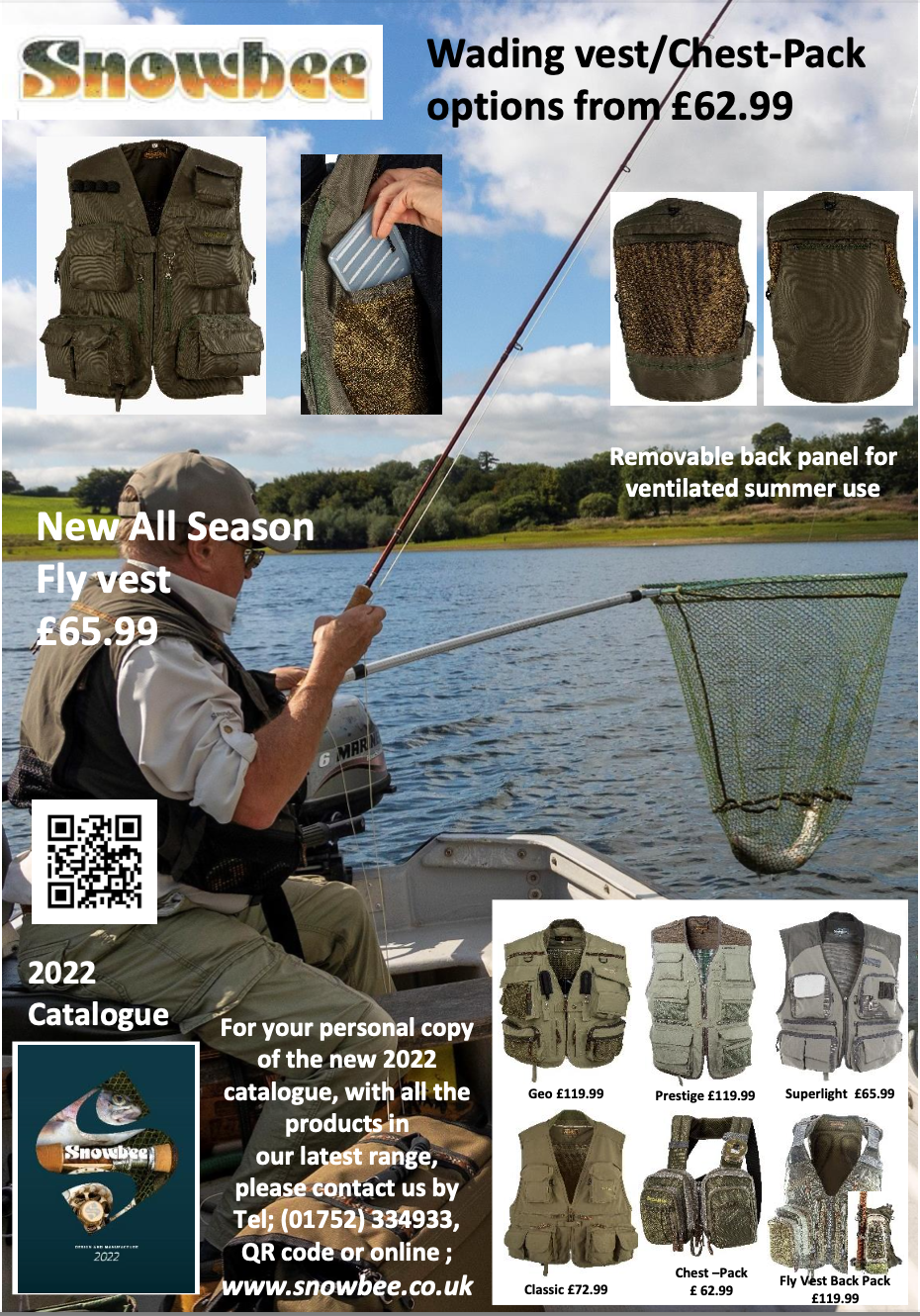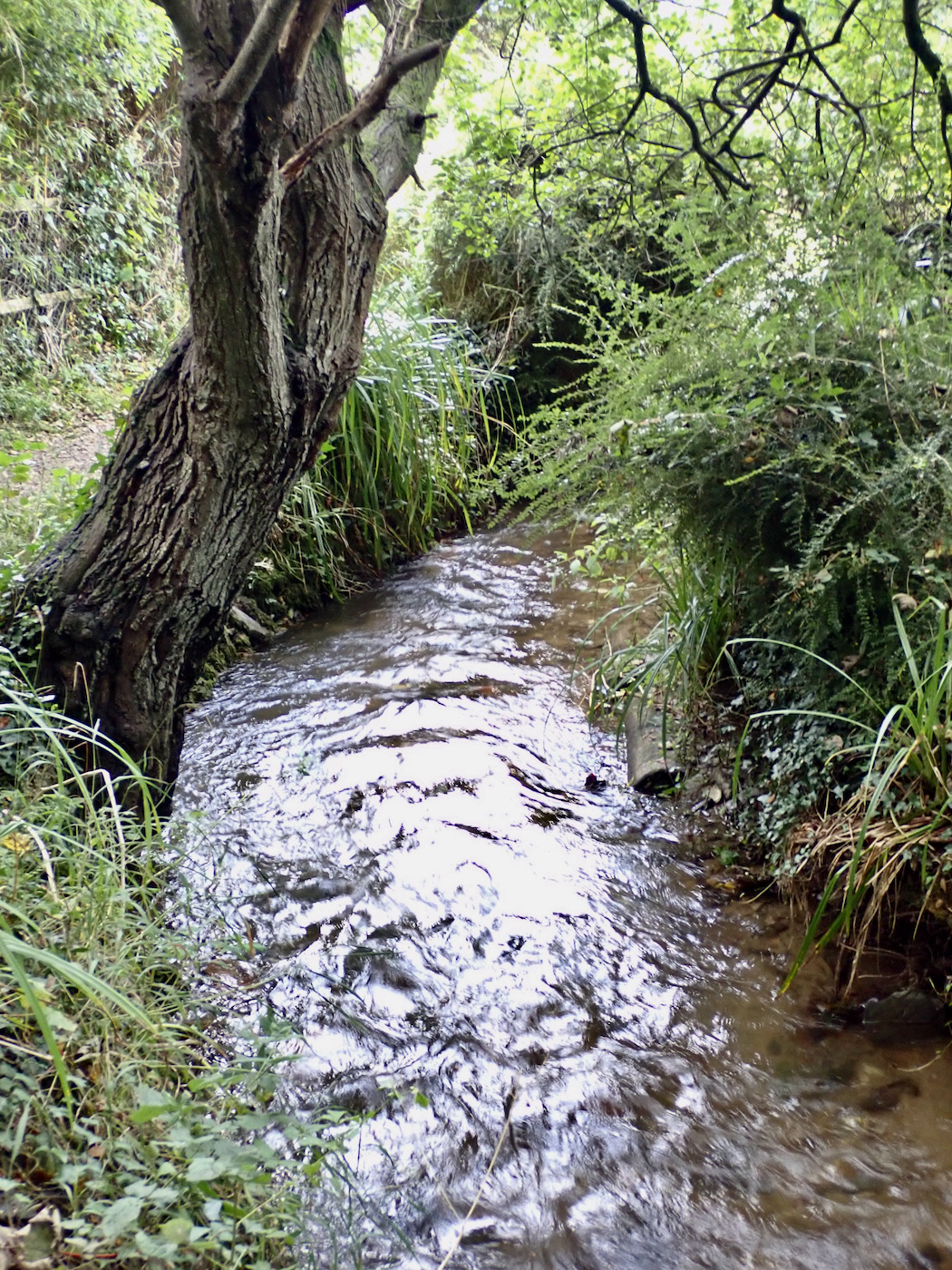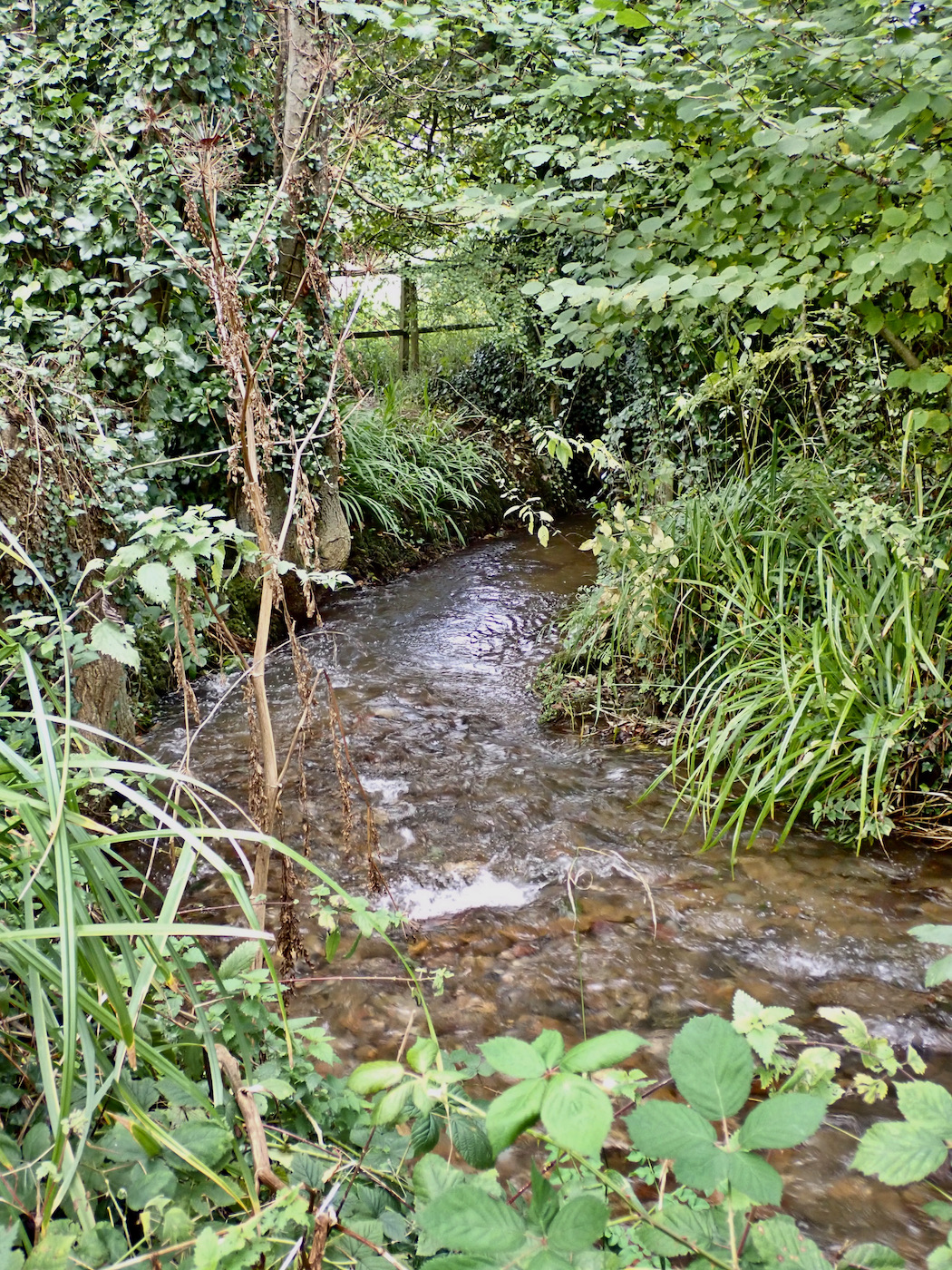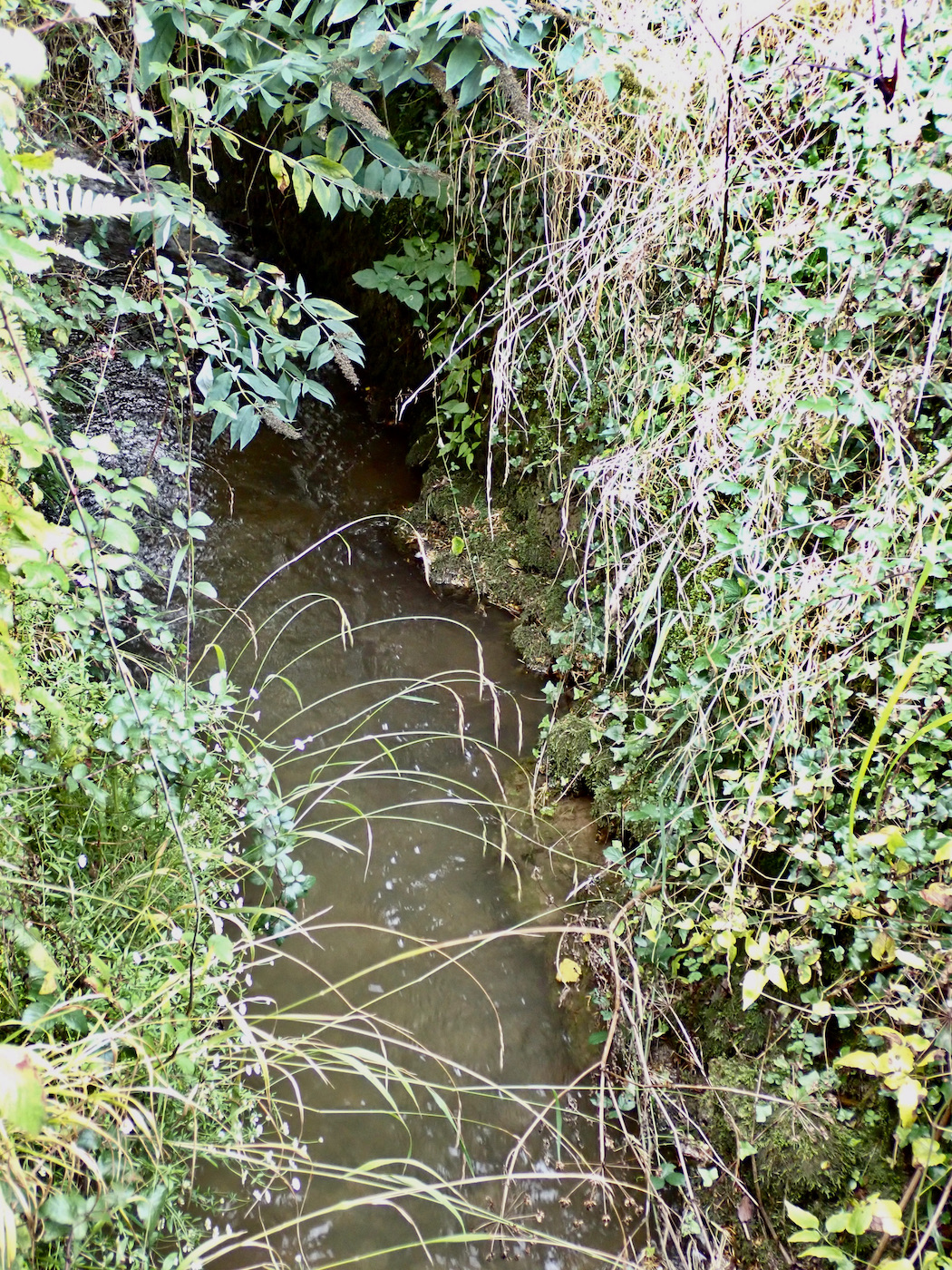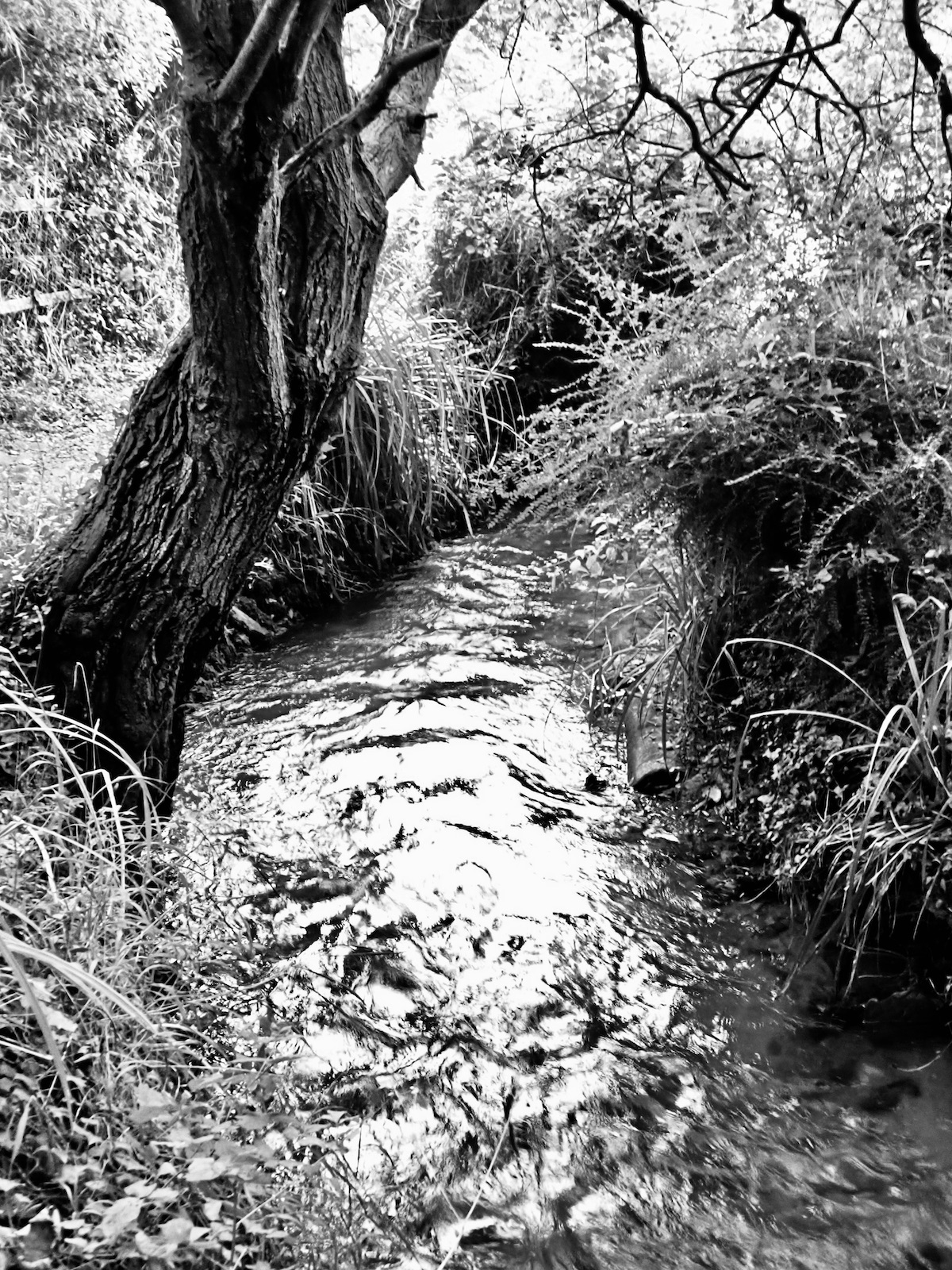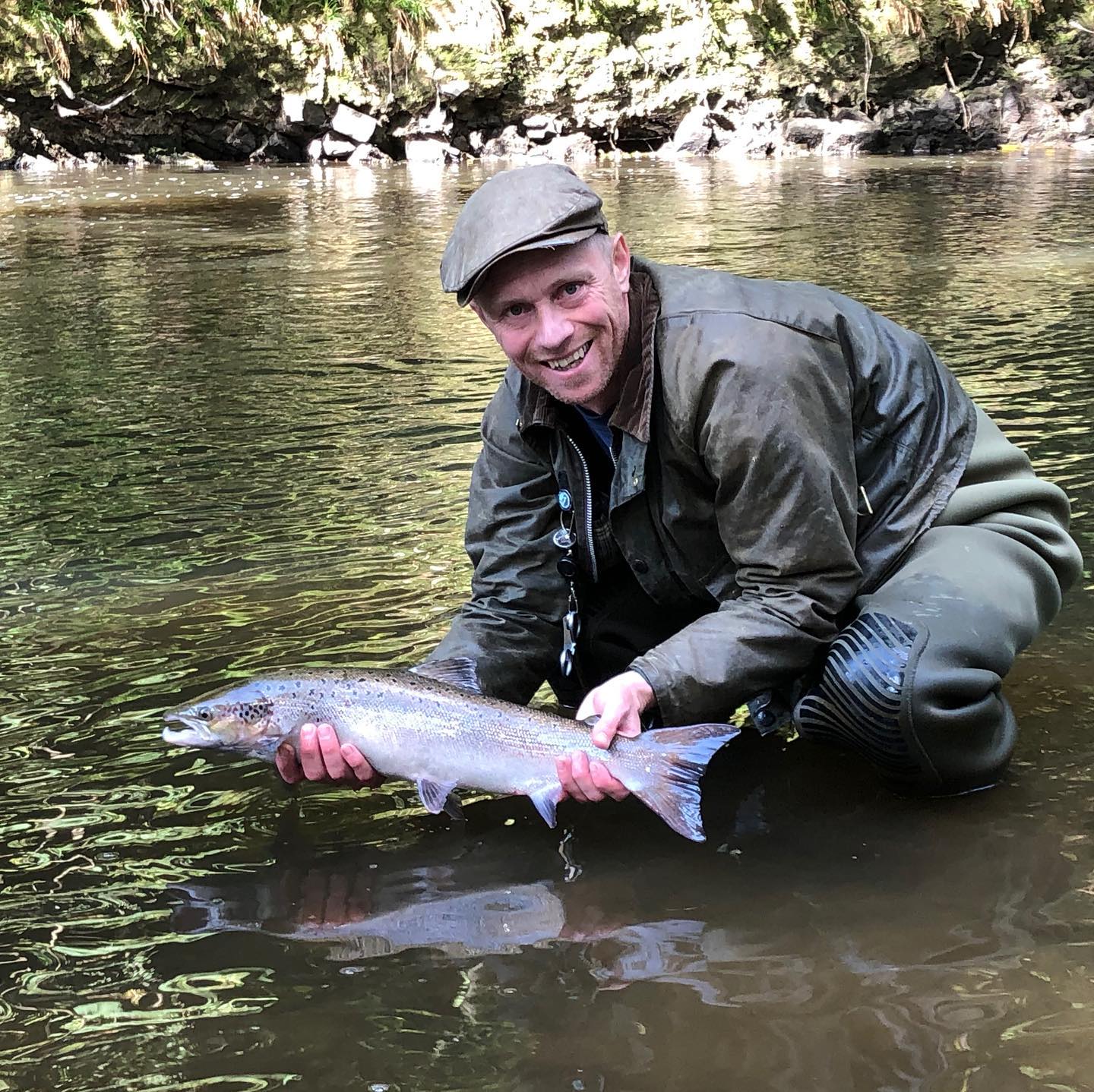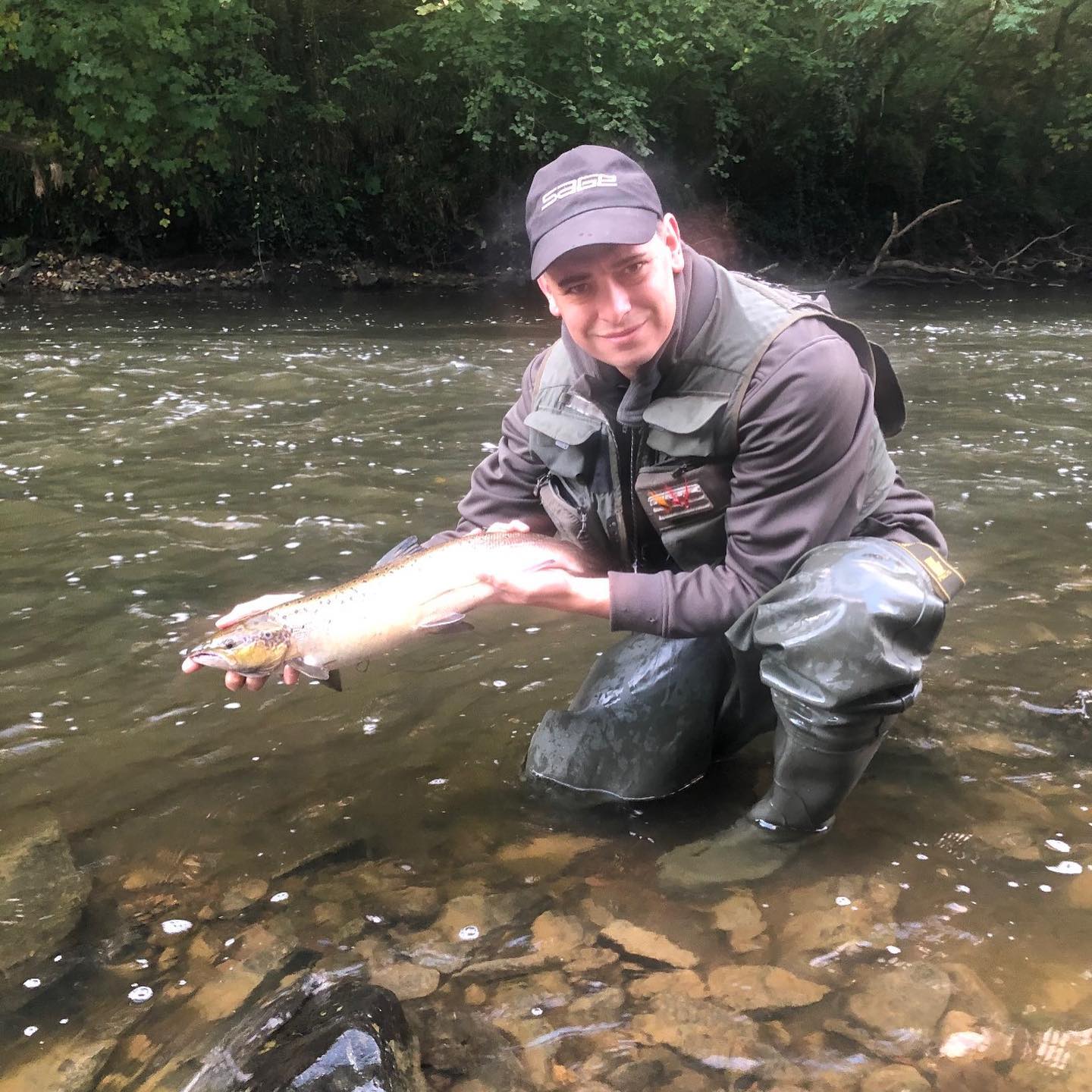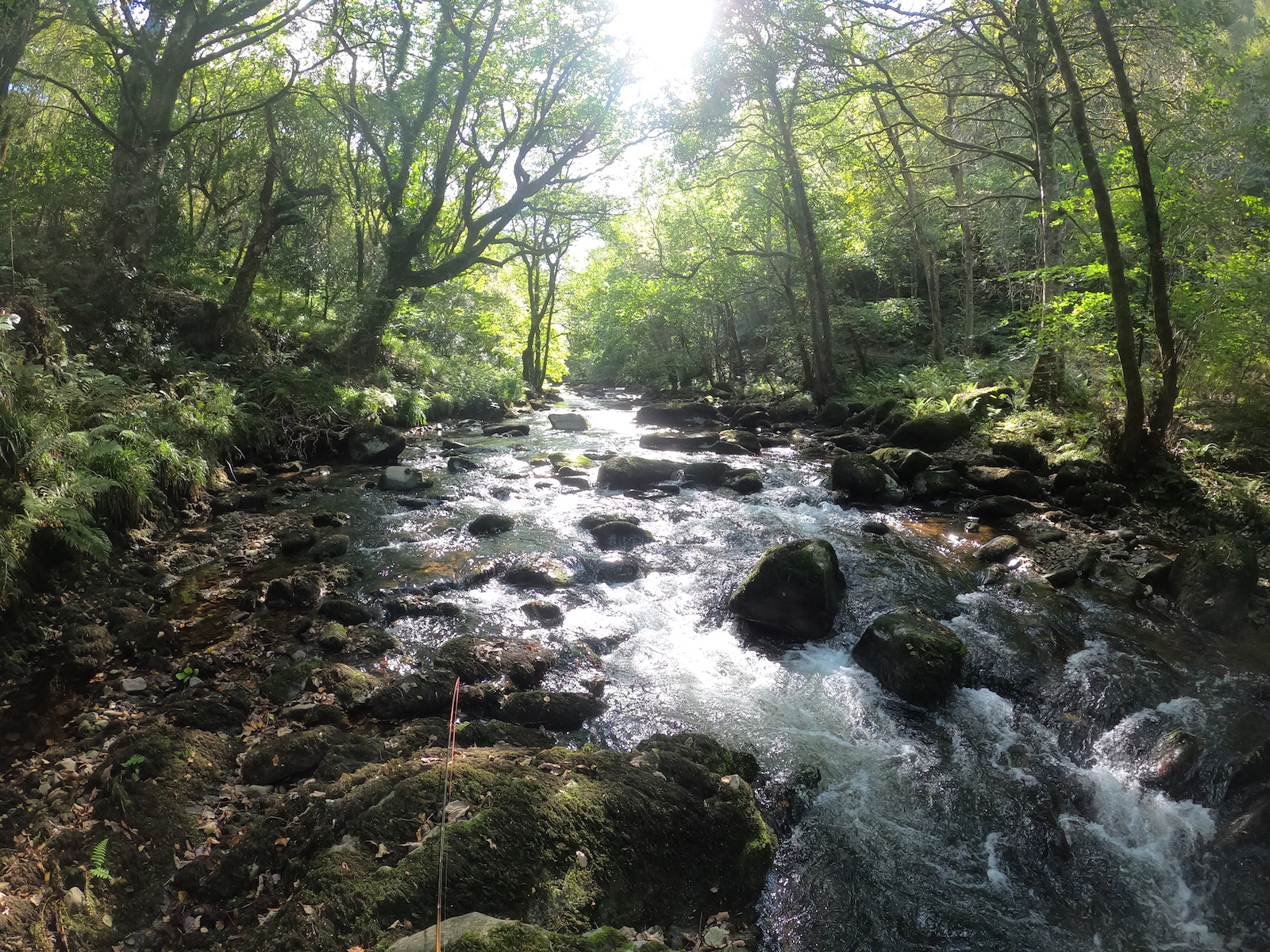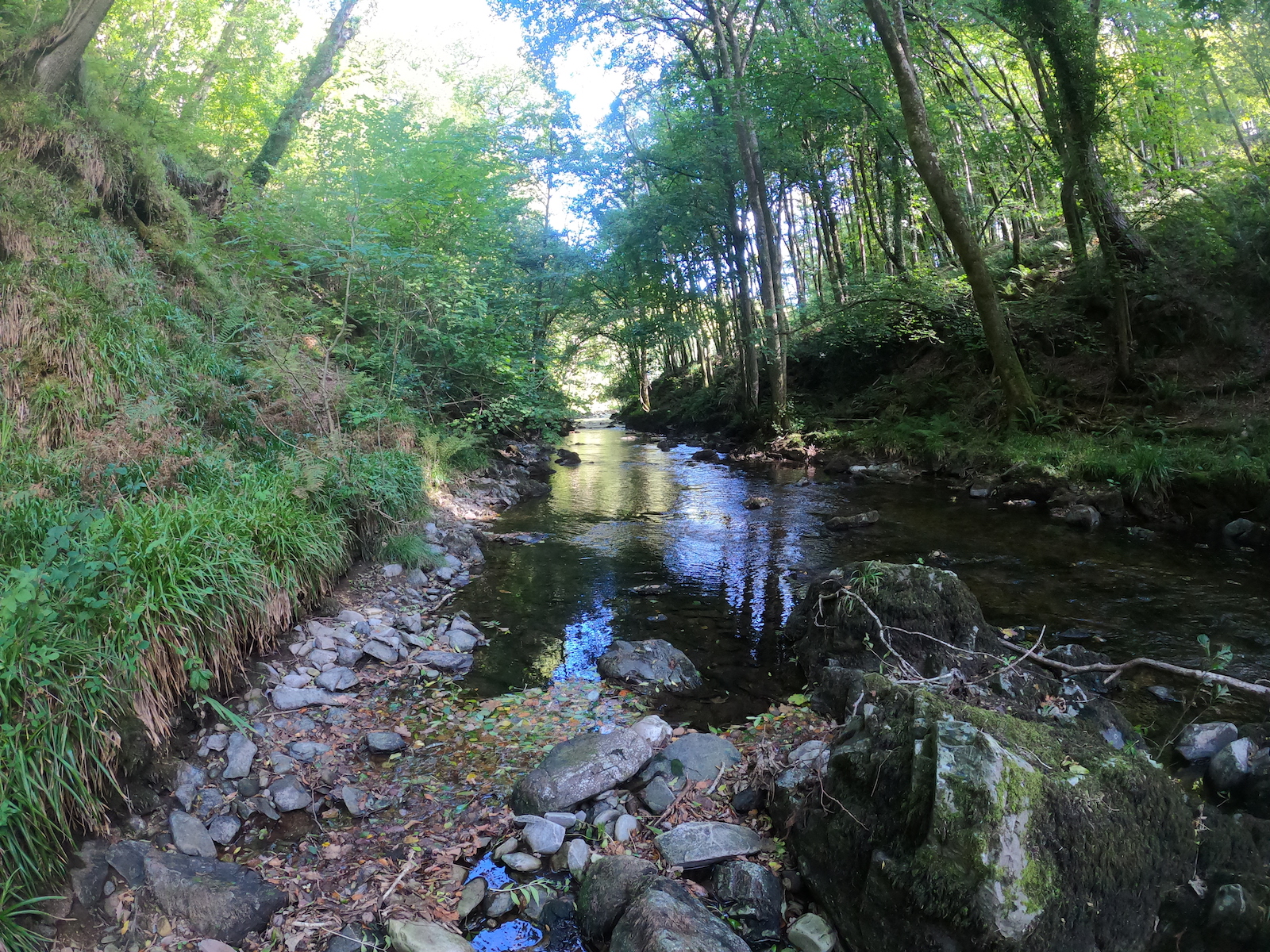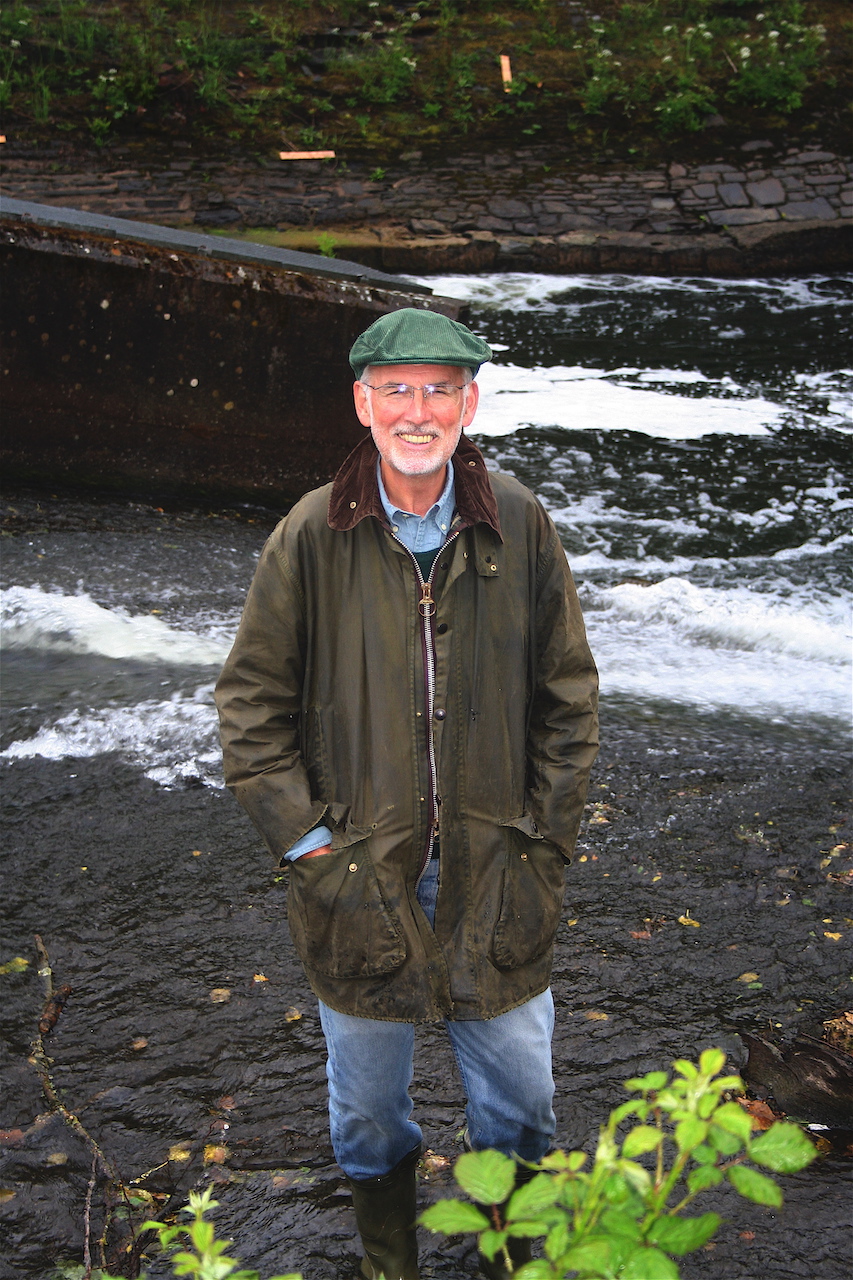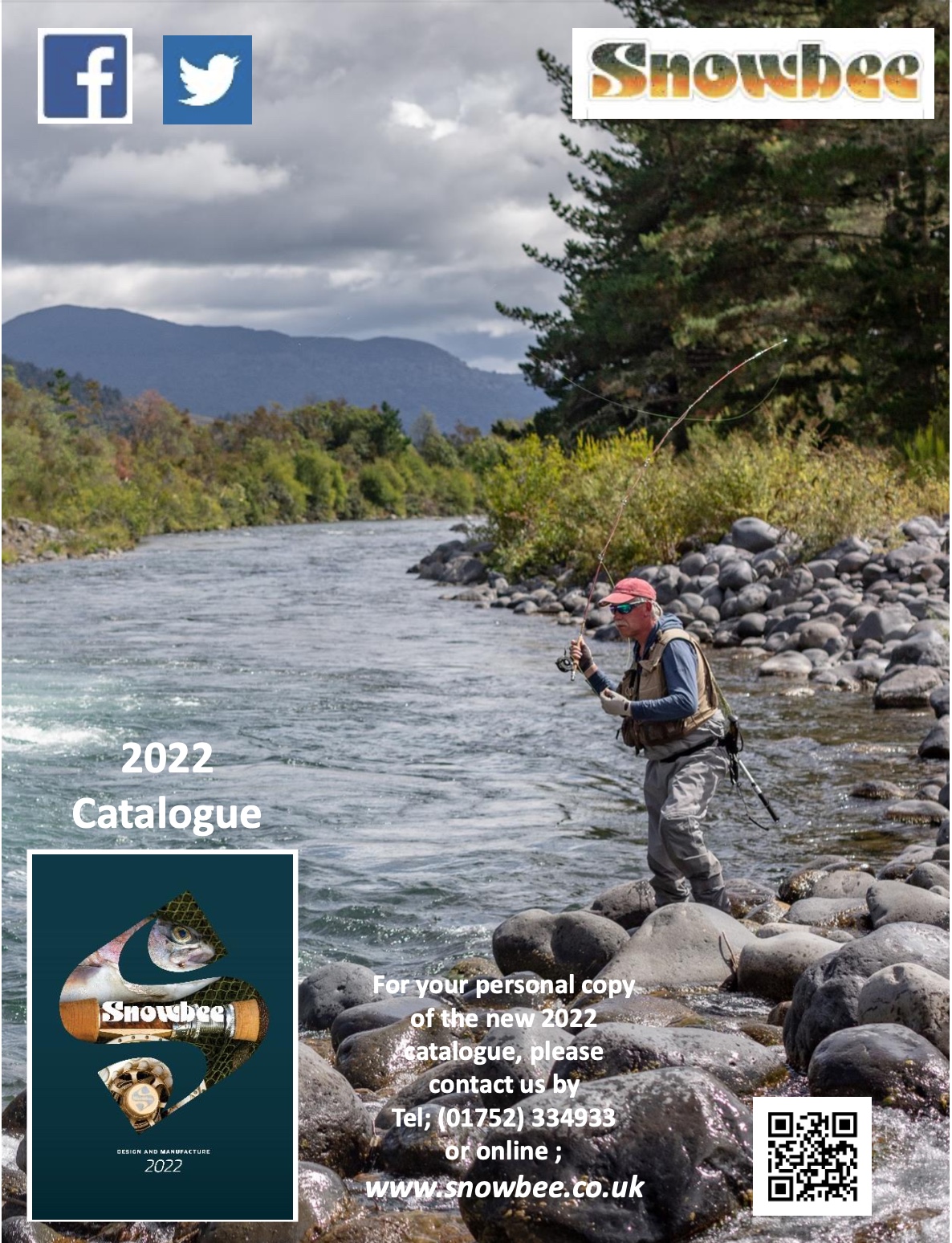
Exmoor looked splendid as I took the winding road to Wimbleball Lake, hills and woods lush and green illuminated by the morning sun.
It was a delight to load the boat, start the motor and head out for a day on the lake in search of the lake’s renowned trout. I generally fish the boat with a partner but on this trip arranged at the last minute I was fishing solo.
Each day’s fishing is a blank canvas and the picture will be painted by choices made during the day. Where to fish, tactics to employ all influenced by weather, experience and of course the often unpredictable trout. Playing this fascinating game of chess with nature has been a healthy addiction throughout my life.
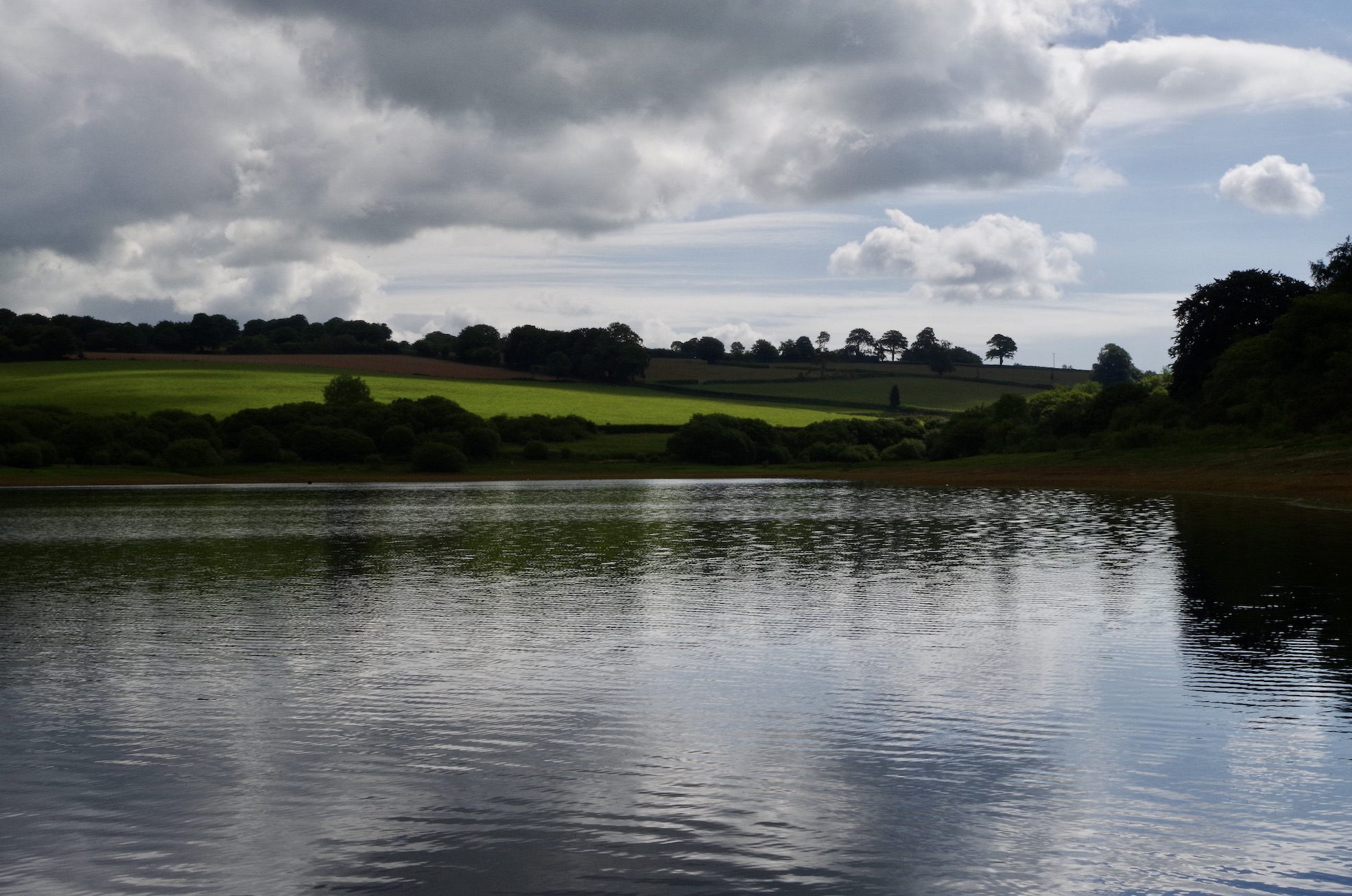
I headed across to Cow Moor Bay and drifted the boat, casting a team of flies into the margin. The occasional fish was rising and I was hopeful that they would start to rise throughout the day as beetles were blown onto the water. Recent reports told of some impressive catches of wild browns and rainbows to dry fly tactics with foam beetle patterns working well.
After half an hour without a pull I decided to head for the wooded Upton Arm one of my favourite areas of the lake. I chugged along in my boat admiring the lush green woodland. Flocks of Canada geese eyed me from the shore line as I passed. Old tree stumps showed high and dry exposed like skeletons as the water recedes following yet another long dry spring.
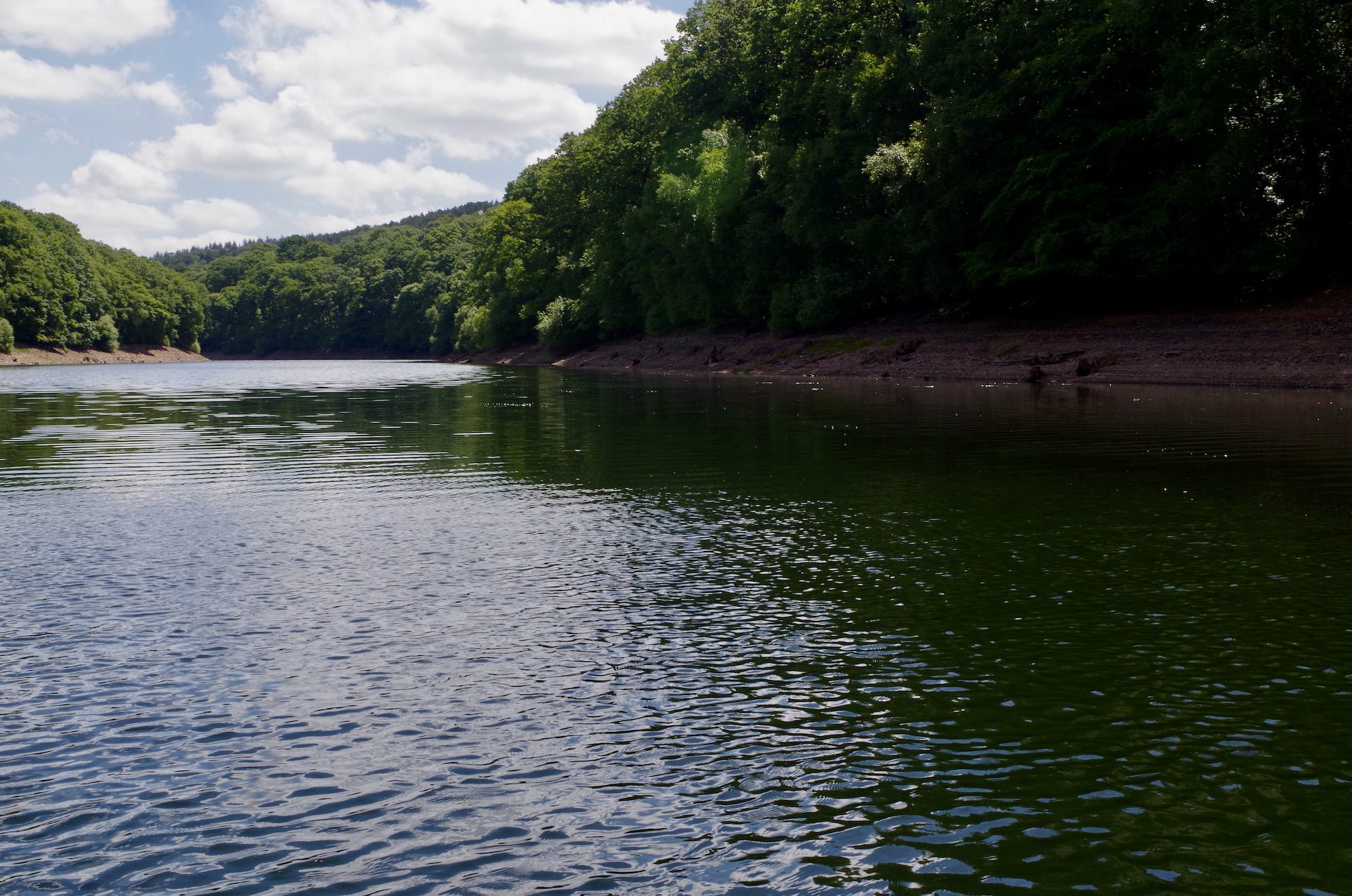
The Upton Arm its banks shrouded in dense woodland has a unique character of its own. The occasional trout were taking beetles close into the margin and I cut the motor allowing the boat to drift in the gentle breeze. A wild brown of perhaps 12oz seized the dry beetle pattern and gave a spirited account on the 5/wt rod and floating line. I admired the fish in the clear water slipping out the barbless hook without lifting the fish from its environment. These are truly stunning looking wild fish with vivid spotted flanks.
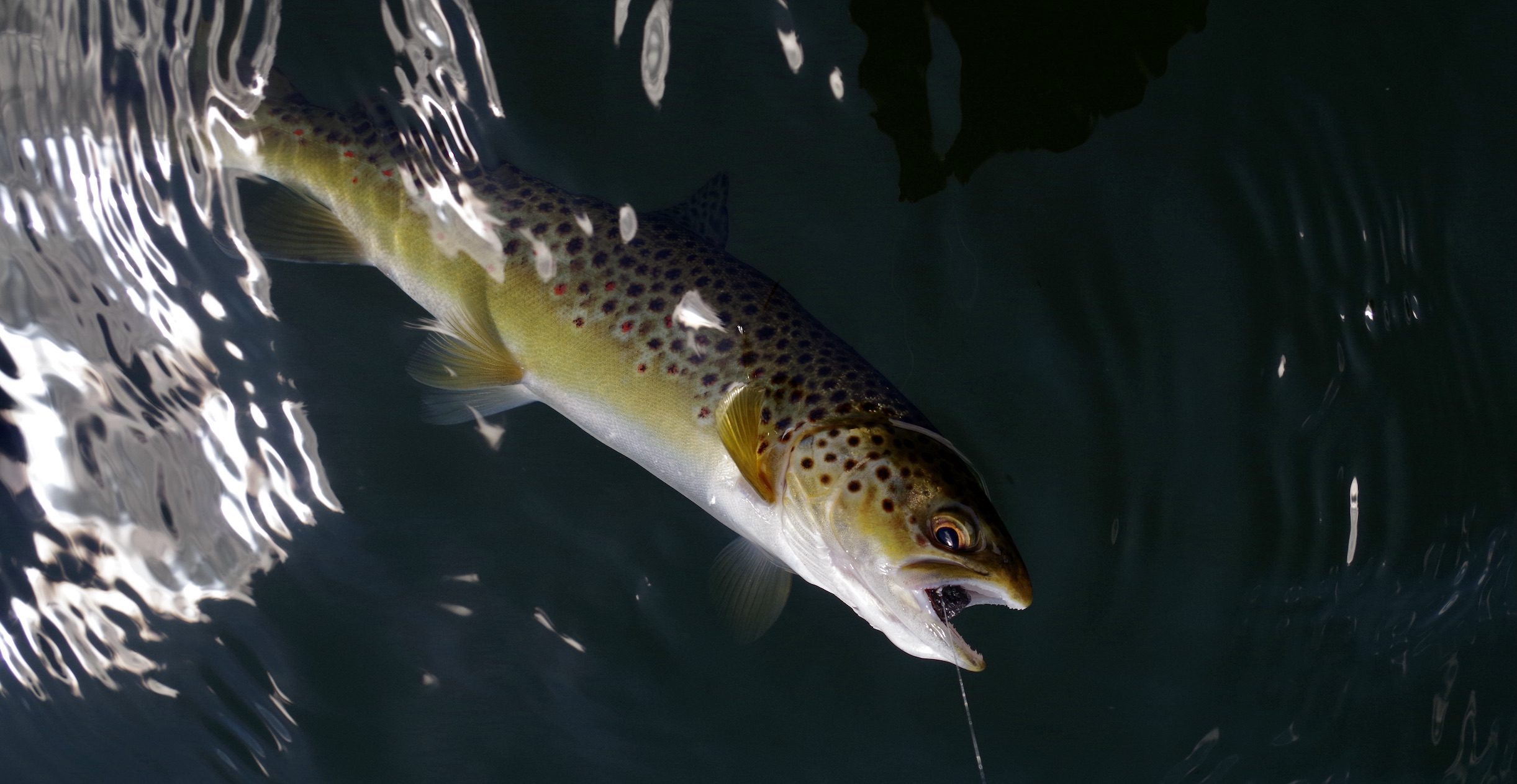
Another brown of close to a pound followed taking a coch-y-bonddu wet fly on a dropper. The occasional larger rainbow were slurping down dries but seemed hard to tempt.
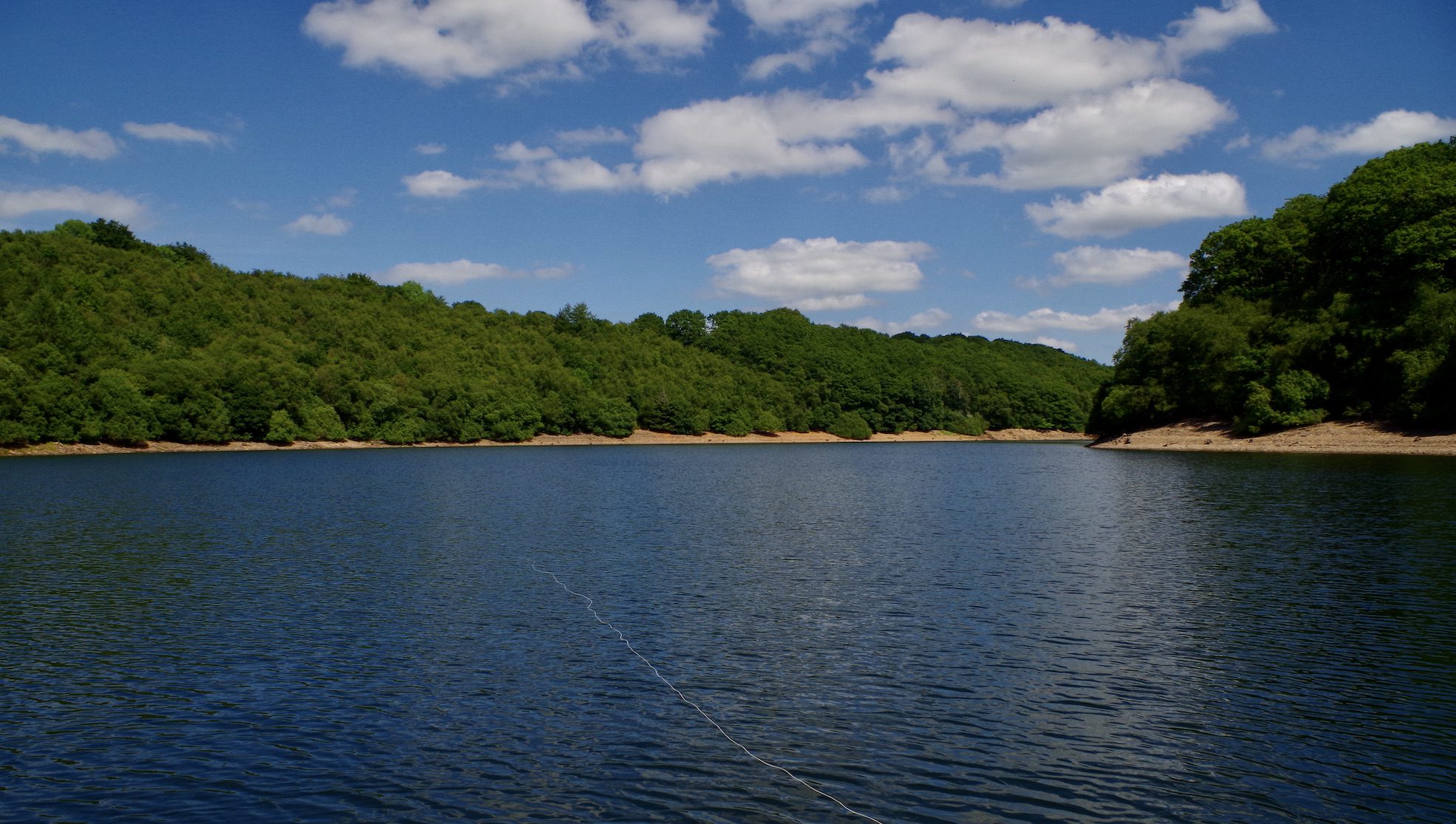
By now there was little breeze and white fluffy clouds were drifting across the brilliant blue summer sky. The haunting call of a cuckoo drifted across the lake. I glimpsed fish cruising in the crystal clear water and savoured the moments pouring a sweet coffee from the flask and enjoyed a snack. Its moments like these that endure in the memory on those cold winter days and when life is on one of its down turns.
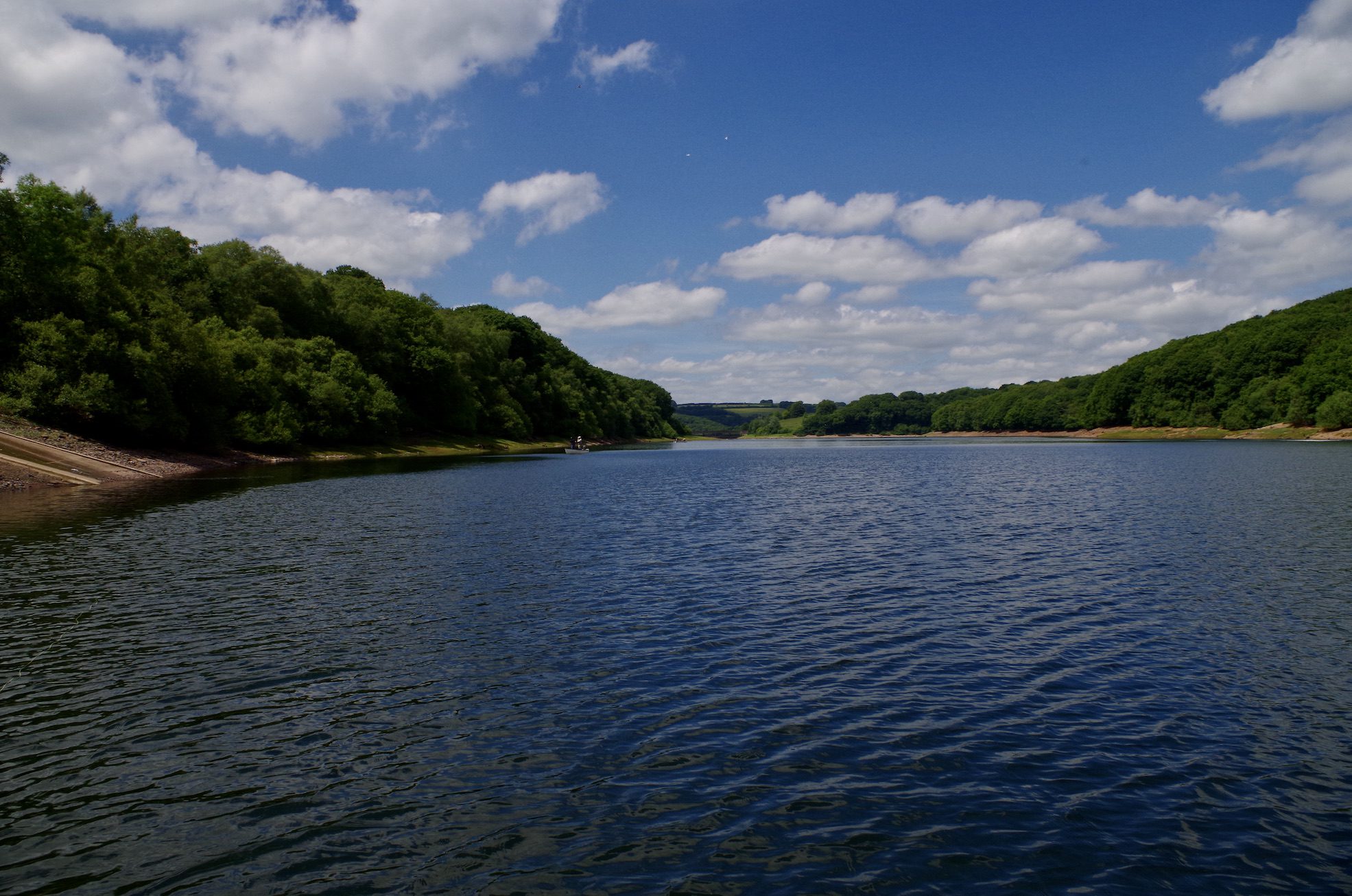
A rainbow of perhaps two pounds sucked down my foam beetle and gave a good account on the light outfit.
Whilst the occasional fish continued to rise it was no frantic hatch and I felt that the majority of fish were not rising. Changing tactics slightly I switched to my 7/ wt rod and a team of flies with a slow sinking booby on the point with a coch-y-bonddu wet fly on the dropper. A good fish was cruising a few feet off the margin and I watched intently as it approached my flies. The line twitched and I pulled tight to feel that pleasing resistance and a flash of flank as the fish reacted in the clear water. The fish took off for deep water testing the tackle, powered by its full tail. The fish would probably have pushed the scales towards 4lb. I captured an image of the fish in the net before releasing it. With warming water and hard fighting fish it is vital to net the fish quickly and release with only minimal time out of the water. Fishing alone I chose to take no self-portraits with the fish.
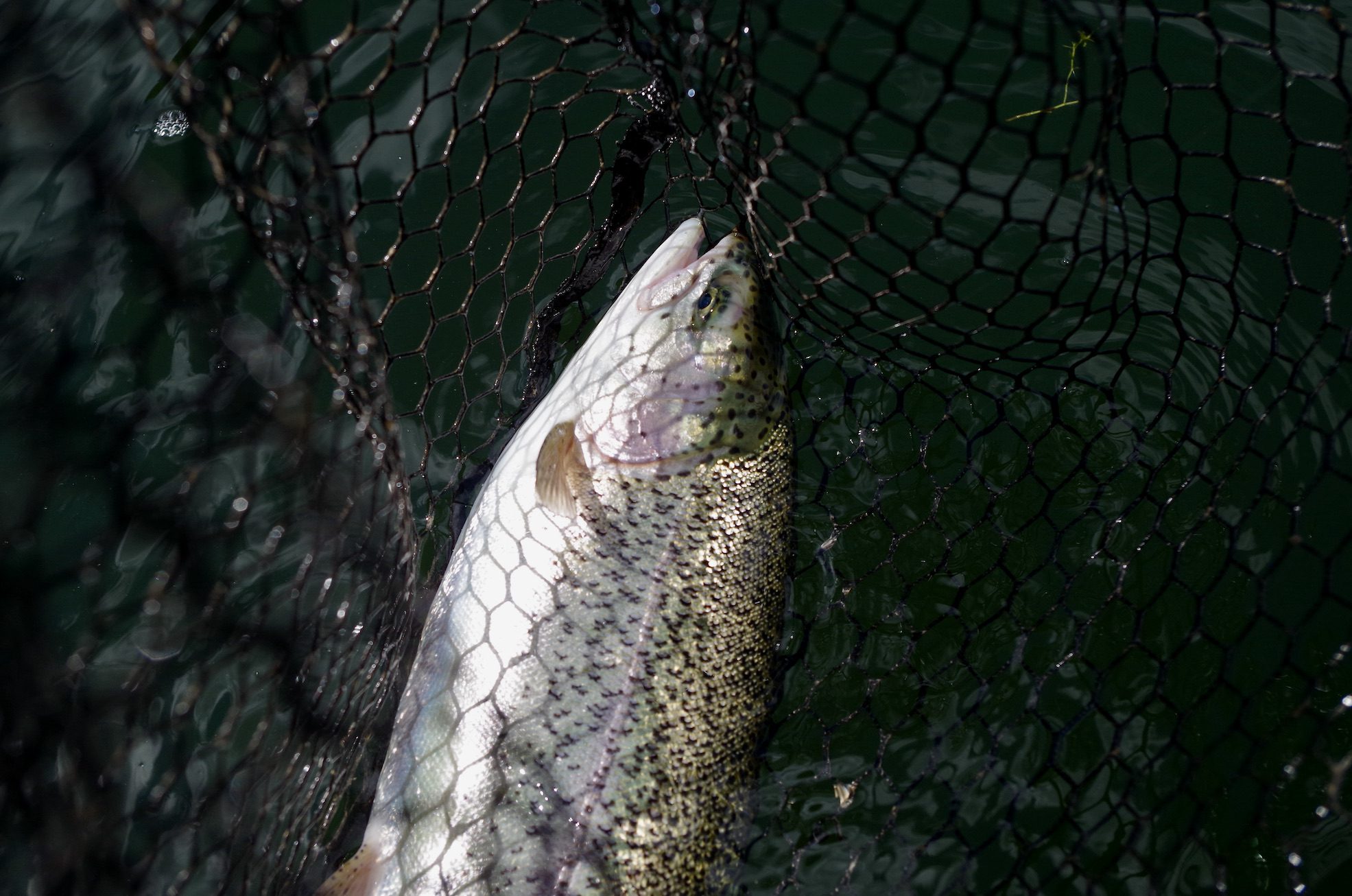
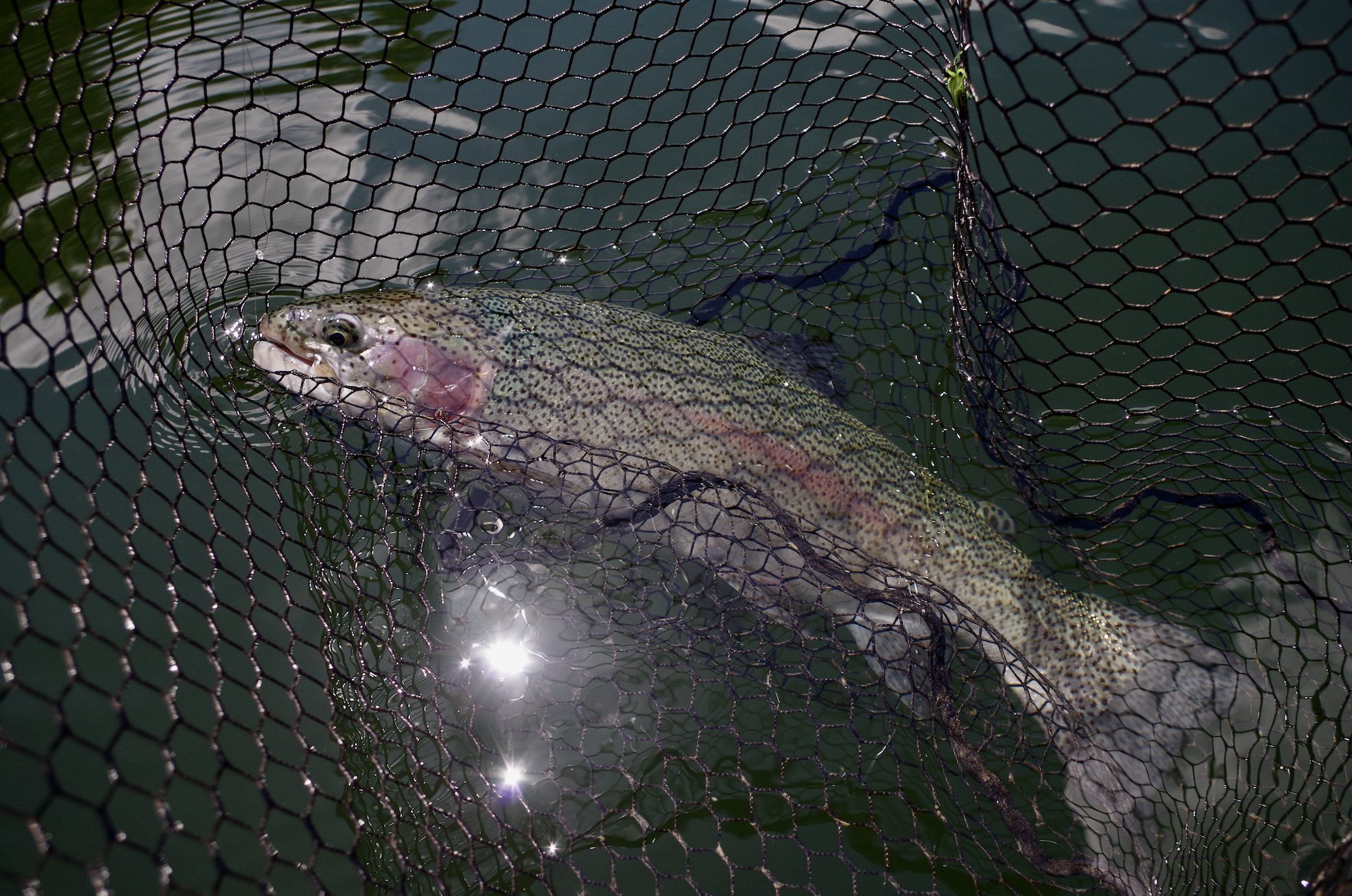
On a hunch I changed the tip fly to a bright sunrise blob. I cast this out and allowed it to sink slowly before beginning a slow retrieve. I could see the bright blob in the clear water and watched as a rainbow cruised towards it. I gave a twitch to induce interest and observed the trout’s mouth open and engulf the blob. I stripped the line tight and connected relishing the joy of sight fishing. During the next half an hour two more rainbows succumbed to the same tactics each one hooked by watching the fish take the fly. If I had waited for the line to twitch or feel a pull I would not have caught. A good pair of polaroid’s being an invaluable tool on this occasion.

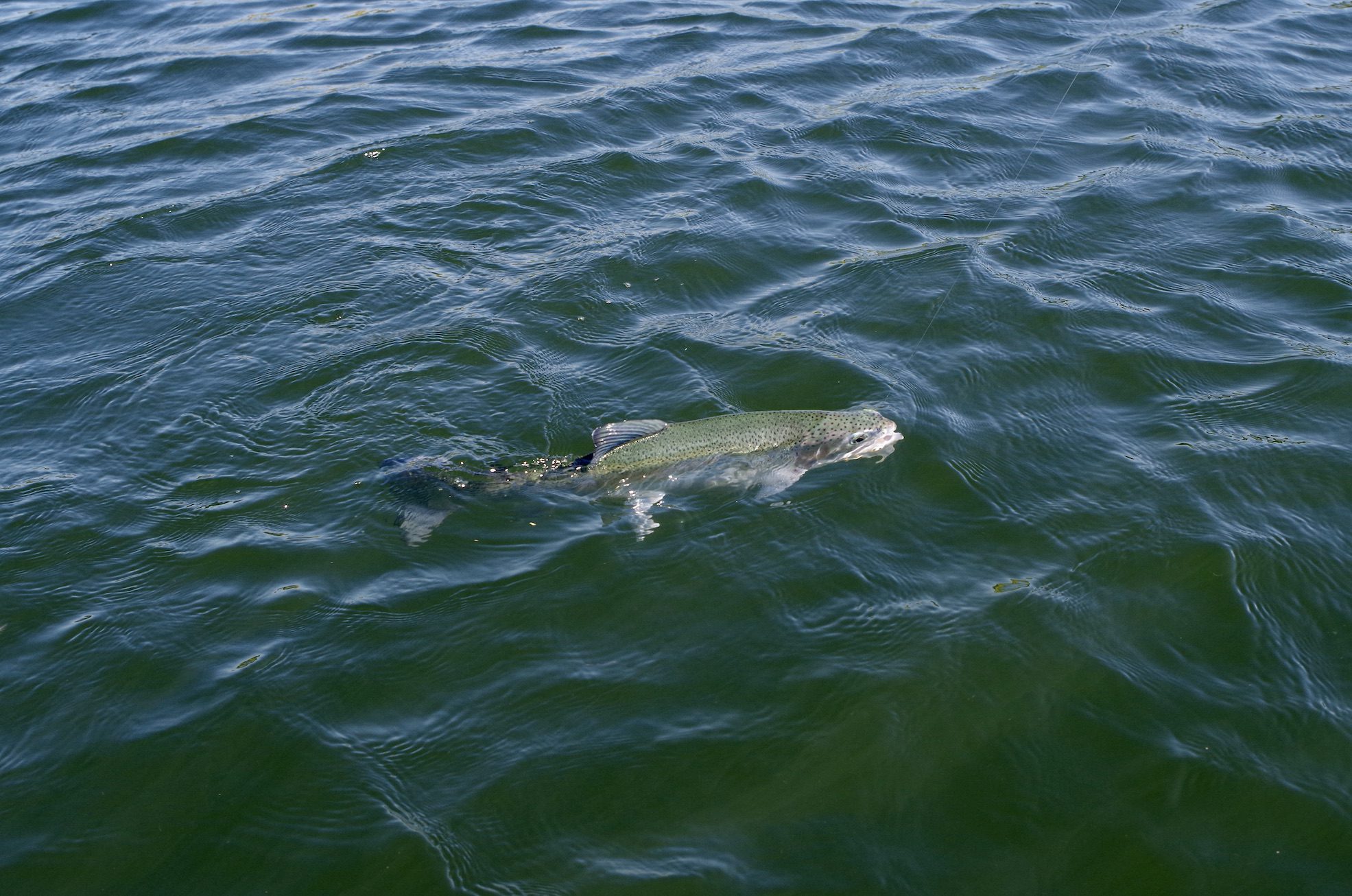
The vivid bright sunrise blob seems so out of place and is far removed from any natural food the fish might find. What triggers the response from the trout? Is it curiosity? It’s not aggression as I was not retrieving fast so I can only assume they think its food and need to sample it. There are certainly no hatches of sunrise blob flies to imitate! These nuances make this whole thing so fascinating. Another question could be why did I choose to tie on a bright gaudy fly? To this I would answer that it was a hunch based on previous experience and the old mantra of the salmon angler to use bright flies on bright days.
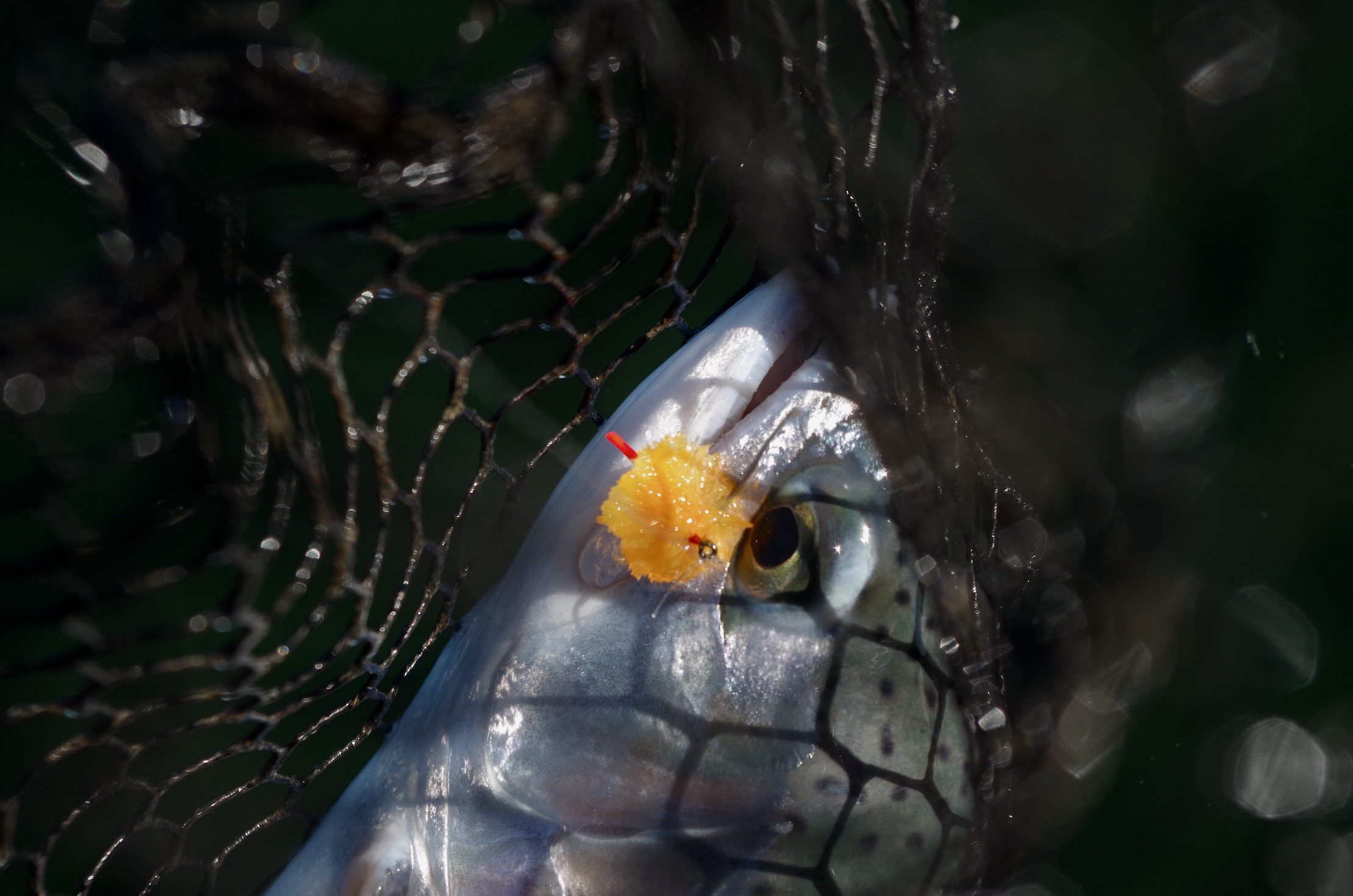
Whilst there were a few fish around there is always the nagging thought that there will be more elsewhere and by mid-afternoon this lead me to leave the sheltered waters of the Upton arm and head for a breezy Cow Moor.
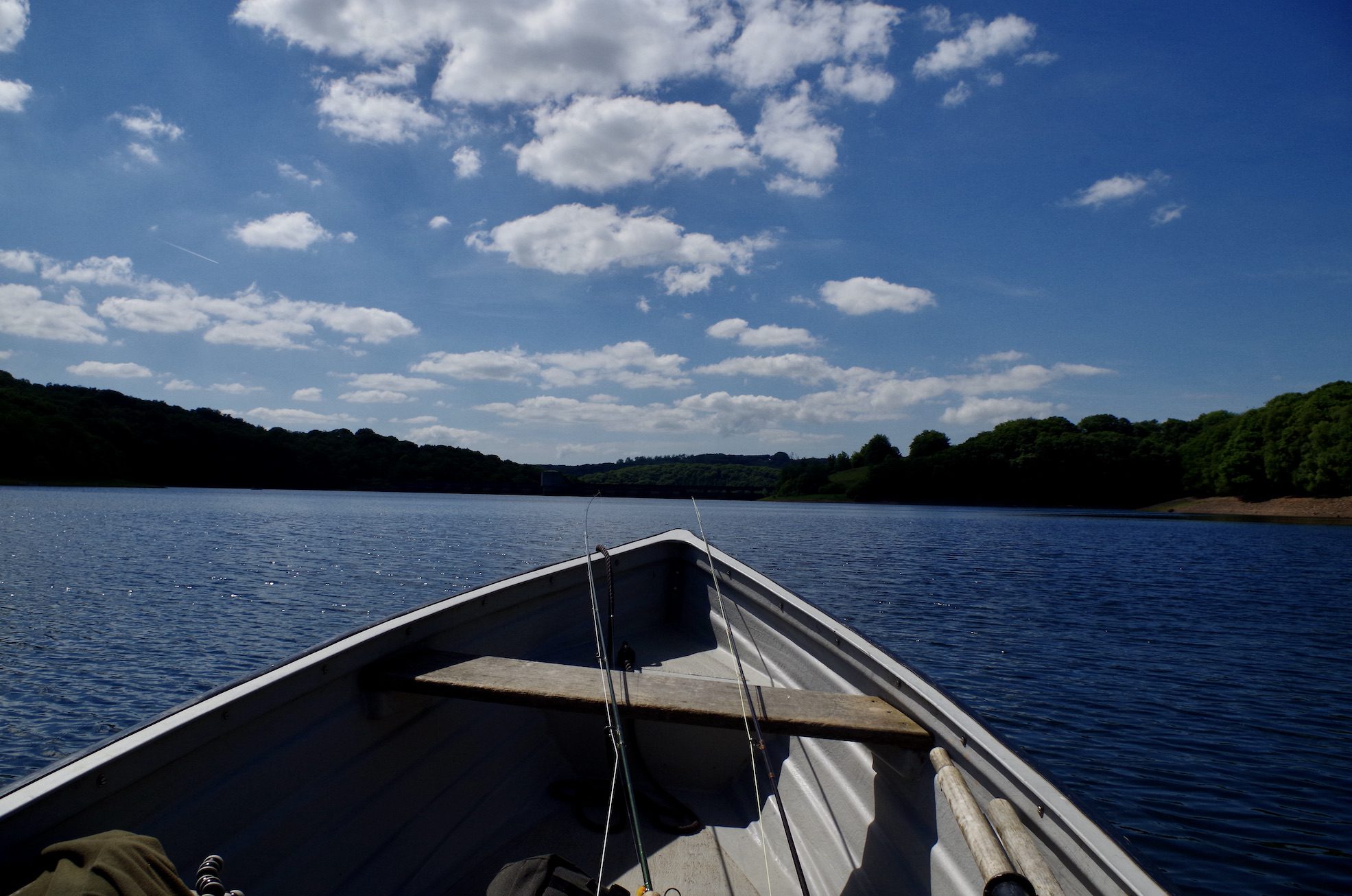
An hour drifting around Cow Moor brought no action and there were few fish rising so I decided to head for Bessoms.
The open expanse of Bessom’s and Rugg’s was a total contrast to the intimate wooded Upton Arm. A couple of youngsters were basking in the sun with loud dance music blasting across the lake. I started a drift and after five minutes felt a savage tug as a rainbow of close to four pounds hit the sunrise blob. This was to be the last fish of the day and gave a superb account as most of these Wimbleball rainbows do.
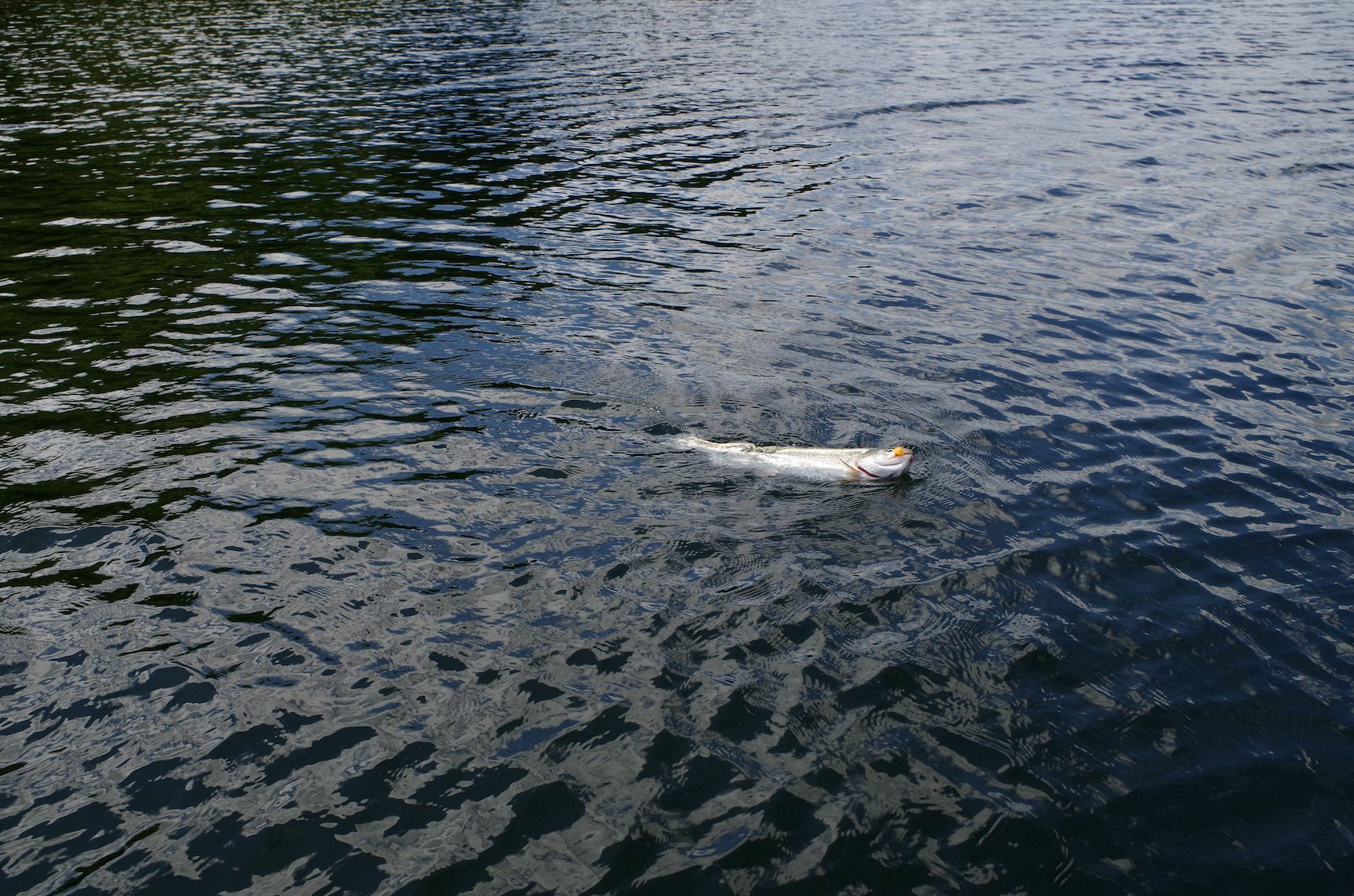
I fished on until around half past six having a few more casts in Cow Moor before mooring the boat and heading for home. It had been a great day with six rainbows between 2lb and 4b with a couple of stunning wild browns. Whilst the fishing is not always easy its always rewarding and on a summer day Wimbleballs vistas of moorland, woodland and pasture are truly stunning.
